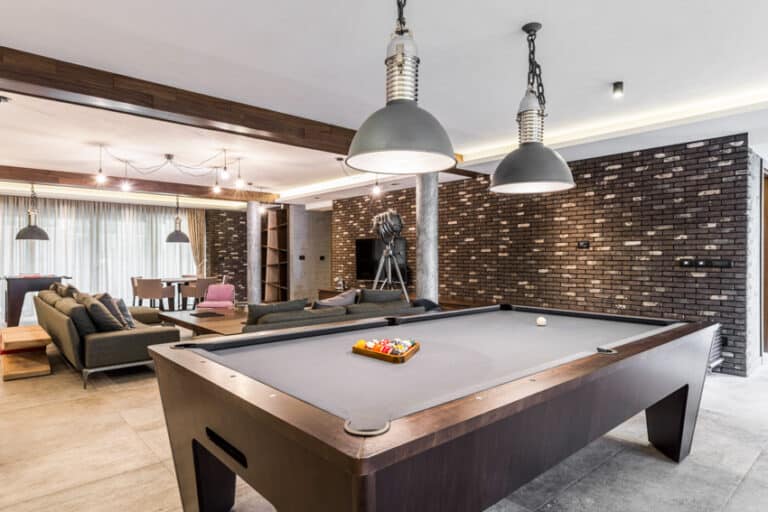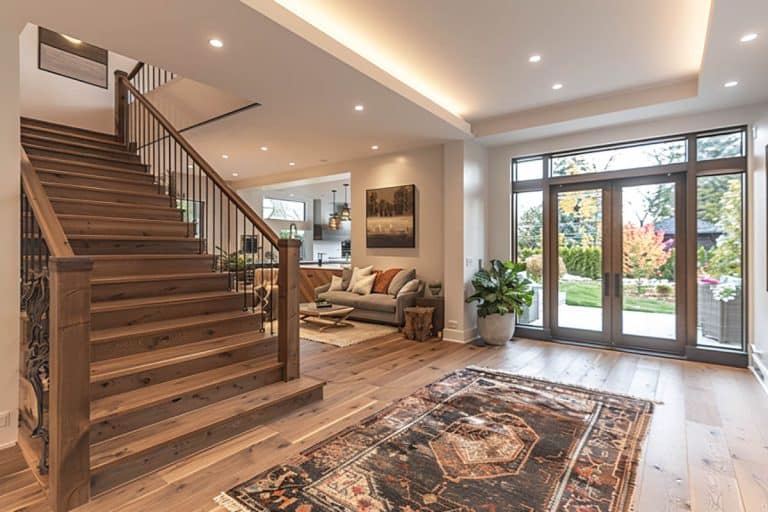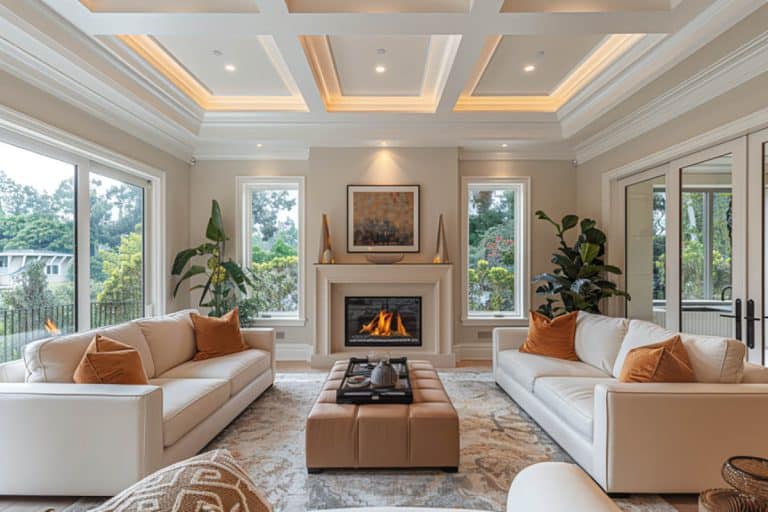25 Types Of Lamp Shades (Design Styles)
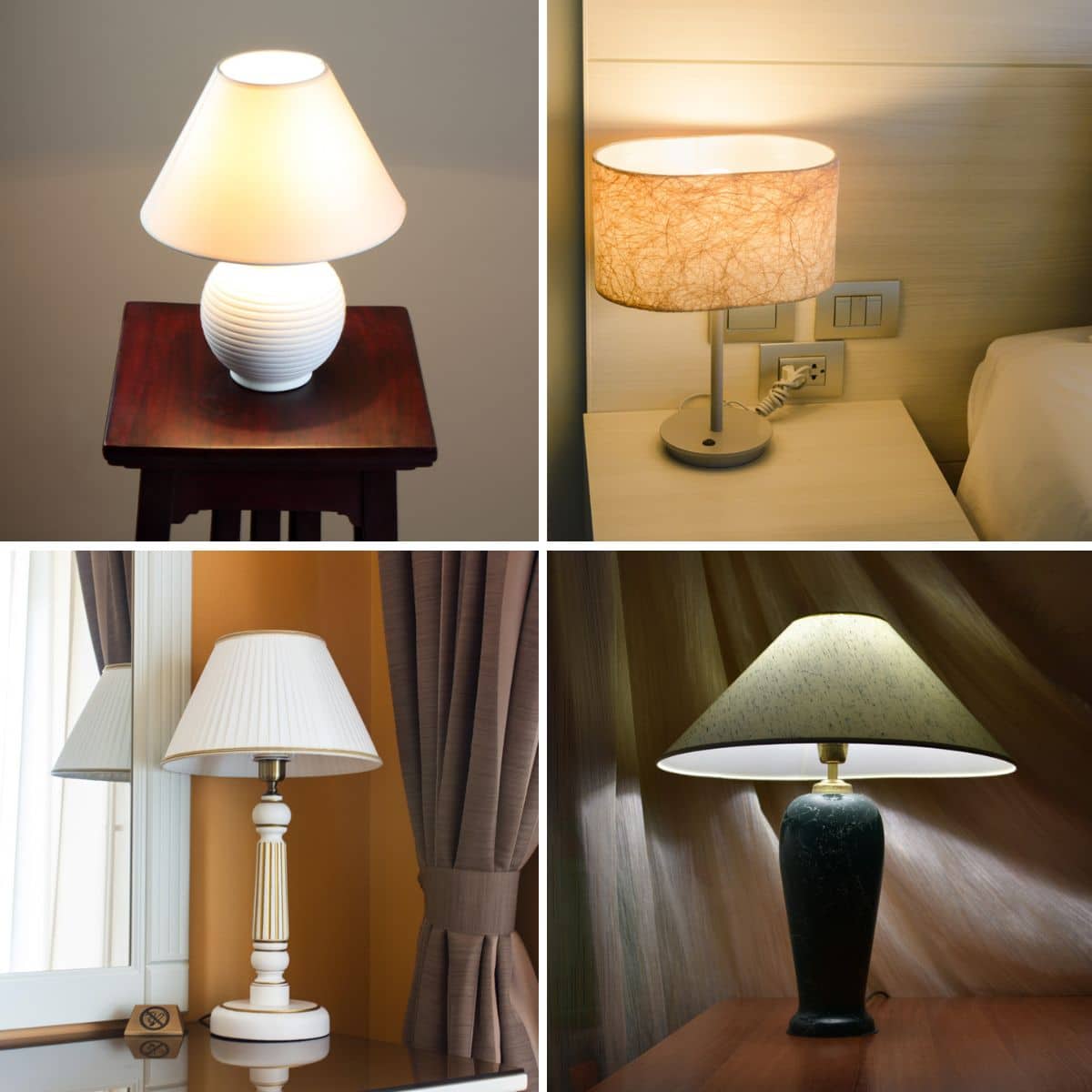
The perfect lamp shade can truly enhance the appearance and atmosphere of a space. It may not appear necessary at first sight, but in reality, they play a significant part in defining how comforting your room’s lighting is. Picking a lamp shade that complements your style is the most enjoyable aspect. Determining the right lamp shade may be difficult since they come in a plethora of shapes, sizes, designs, colors, materials, and patterns. Lamp shades have a lot more to do with them than you would believe. Blending colors can be an extremely interesting and satisfying once you learn the fundamentals. In this article, we will discuss all the categories under lamp shades.
| Types of Lampshade Styles | ||
| Round | Fluted | Rectangle |
| Square | Pleated | Coolie |
| Bell | Scalloped Edge | Cylinder |
| Empire | Rolled Edge | Pagoda |
| Dome | Hexagon | Oval |
| Drum | Tapered Drum | Velvet |
| Round | Glass | Cotton |
| Parchment | Crystal | Bamboo |
| Linen | Silk | Mica |
Lamp Shade Styles
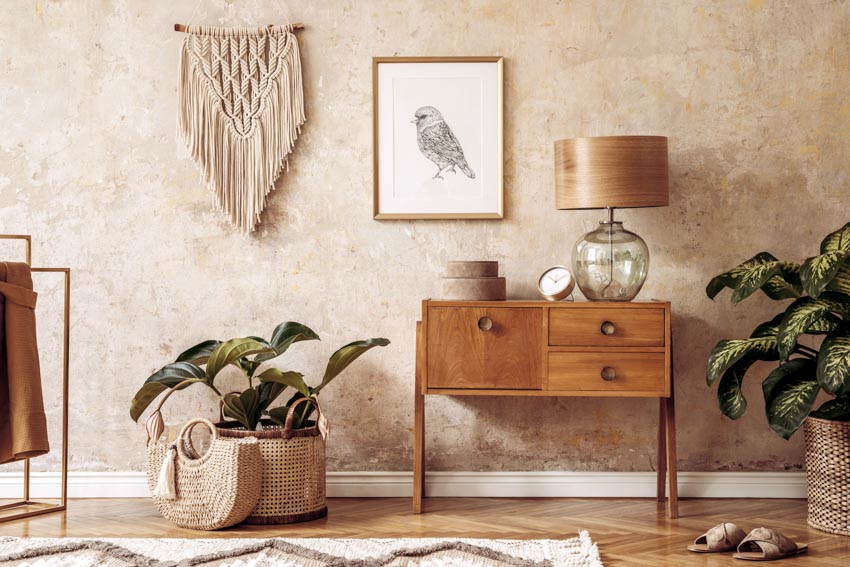
Consider picking a lamp shade shape that matches the structure of your lamp’s bottom. Round, square, angular, and candlestick bases are all some of the available shapes.
Round bases offer a classic appearance; square and angular bases have a more sophisticated aesthetic, and candlestick bases go with any décor and lamp shade shape.
Round
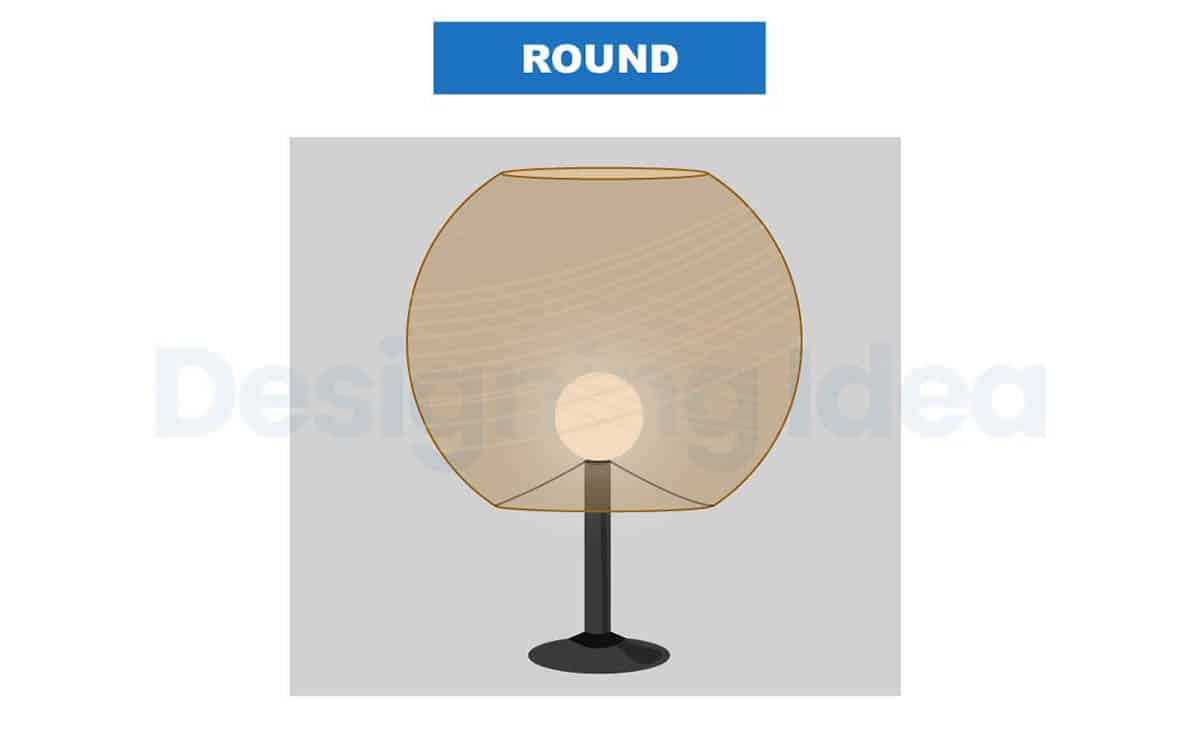
Oval, cone, and drum types of lamp shades belong to the round-shaped lamp shade category, and they work well with round or candlestick bases.
Desk lamps and tall stand lights are frequently outfitted with round lamp shades. Ambient light is emitted from the top entrance, while concentrated lighting is emitted from the bottom.
Drum-shaped shades, with their sleek upright edges, are great in trendy, minimalist, or modern house designs. Oval and cone-shaped lamp shades blend into almost any décor.
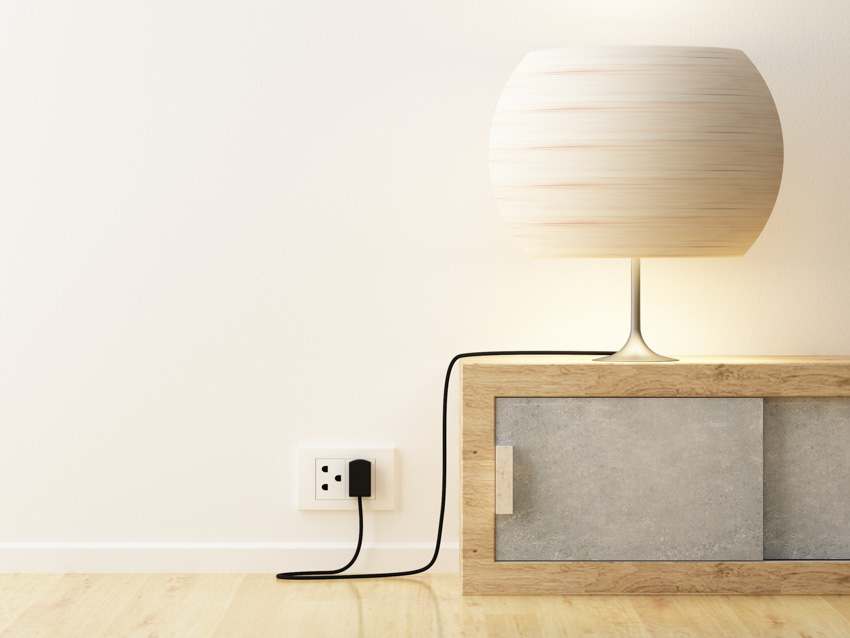
Round shape styles: Minimalist, modern, transitional, eclectic, Scandinavian, coastal, cottage, and industrial styles.
Square
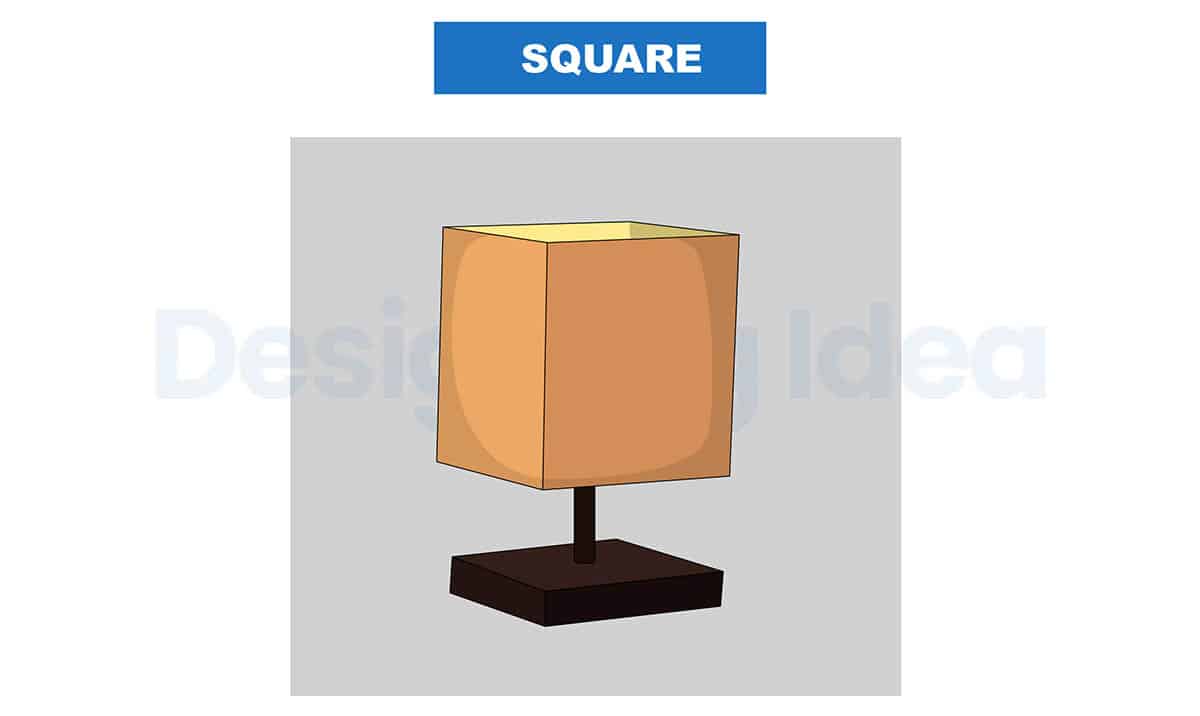
With square and angular bases, square and rectangular types of lamp shades would suit very well. They have a sleek, modern appearance because of their flat edges.
Since they feature huge apertures at the top and bottom, they generate a lot of light, making them ideal for both performance and ambient lighting.
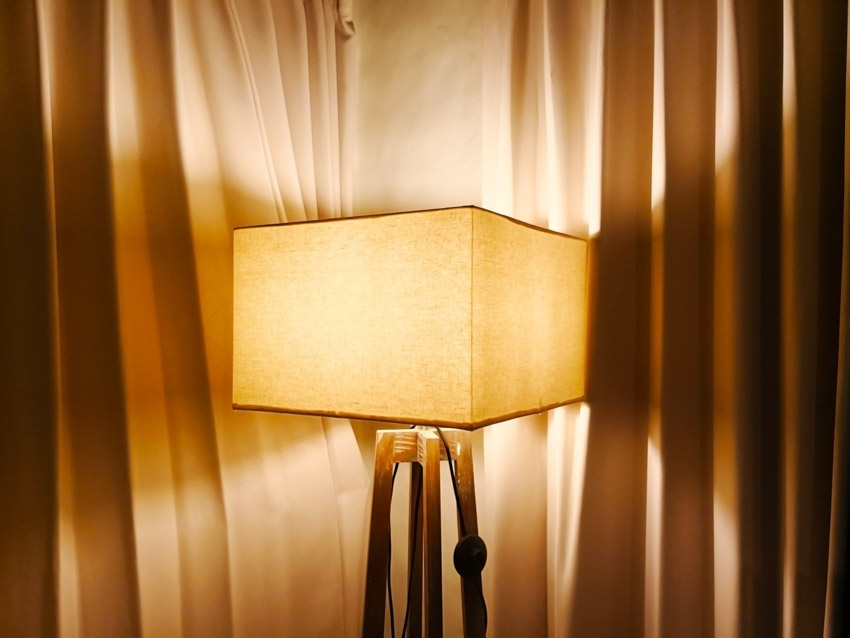
Square shape styles: Modern, contemporary, and minimalist interiors.
Bell
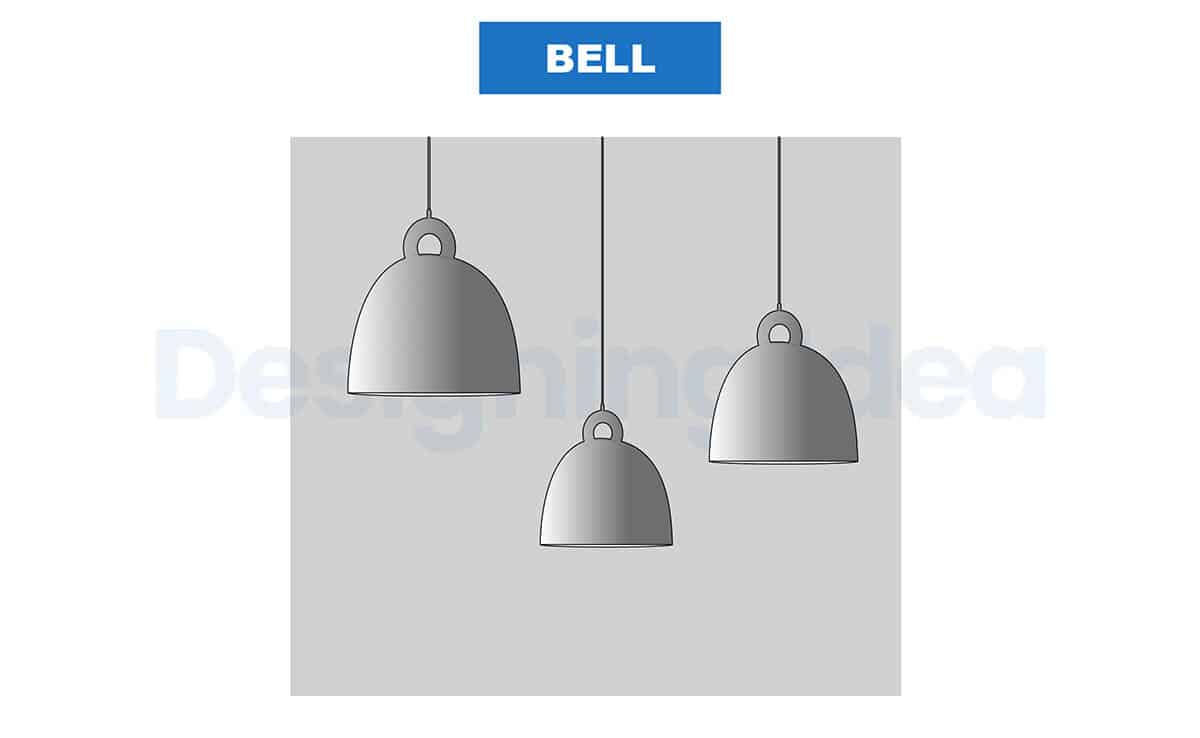
Bell-shaped lamp shades have a circular top aperture with curved edges leading to a larger base opening.
Bell-shaped types of lamp shades are ideal display lights because of their flared bottom, which radiates light over a wide spectrum.
Furthermore, the top produces ambient light. Bell-shaped lamp shades work well with round or candlestick bases, and they go well with any timeless design.
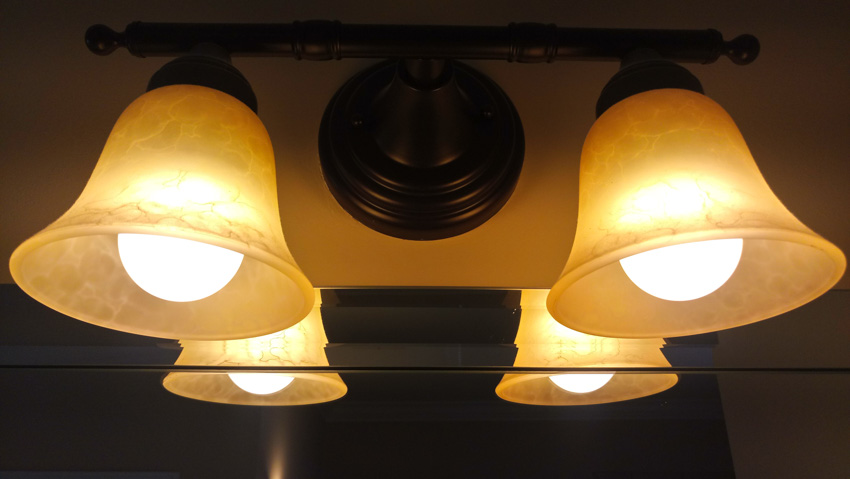
Bell shade shapes go with these interior and furniture styles: Traditional and classic interior styles are best, but it can also work well with transitional and eclectic decor.
Empire
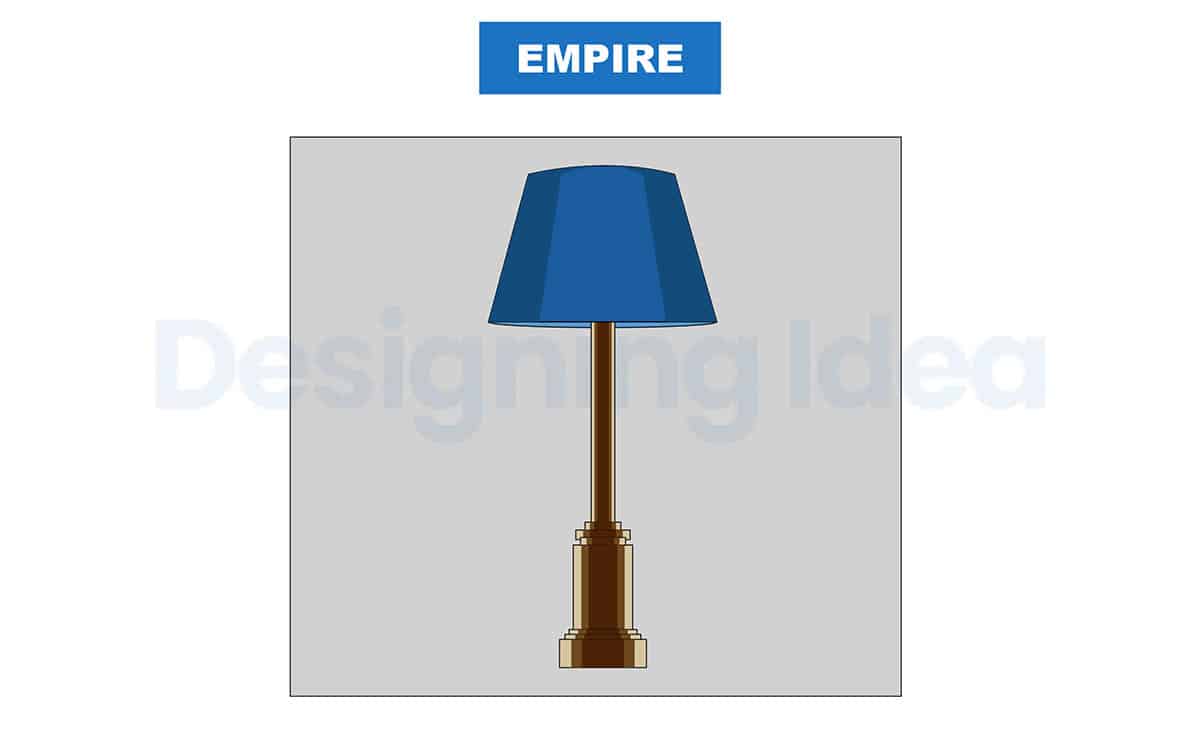
Empire lamp shades feature a fairly small and round top aperture, straight sloped sides, and a broad bottom aperture.
Since the majority of their light comes from the bottom, they’re best employed as decorative lighting.
Empire lamp shades are often found on table lamps with round or candlestick bases and blend very well with vintage design.
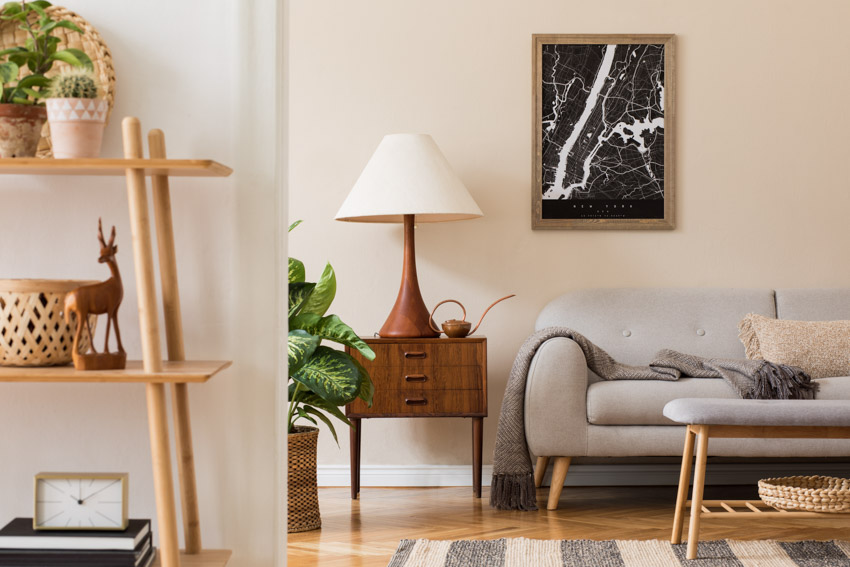
Empire shade interior styles: Works well with traditional interiors but can be used to add vintage charm to a transitional or eclectic room design.
Dome
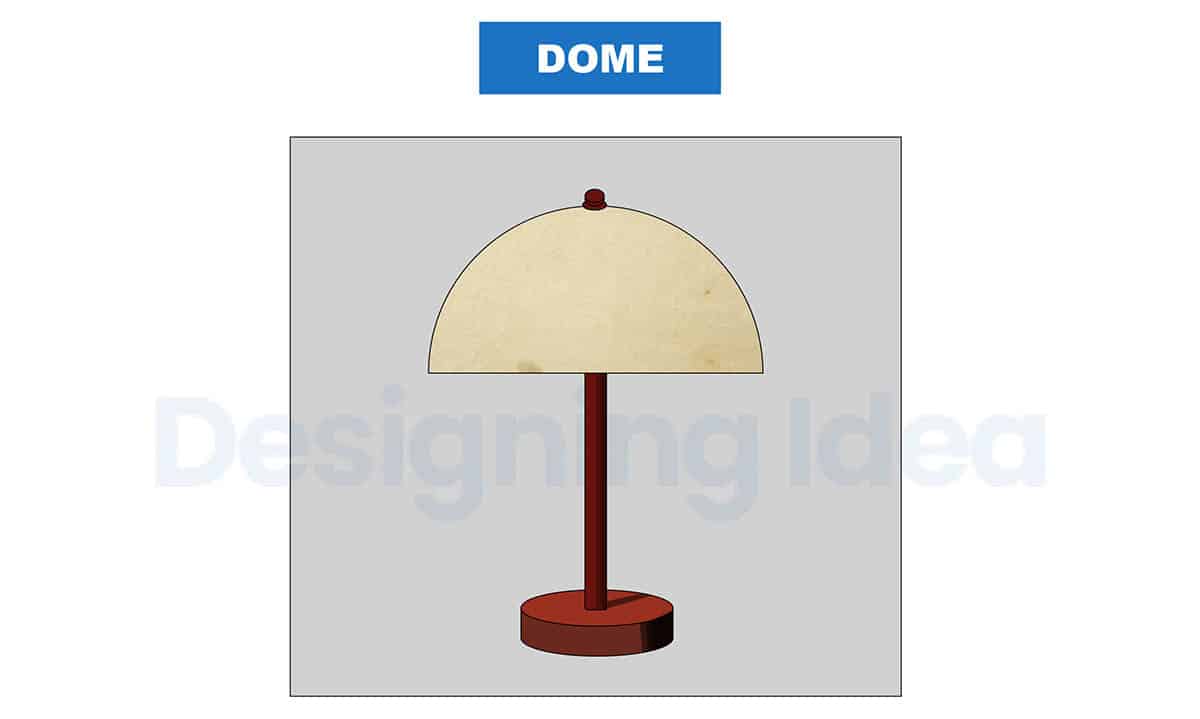
Dome shades are commonly used on huge ground lamps with spherical bases or over-the-top lights. They have a semi-circular form and release light in a descending direction.
They are suitable for broad illumination due to their broad aperture. Dome shades work well in a variety of setups, from antique to modern.
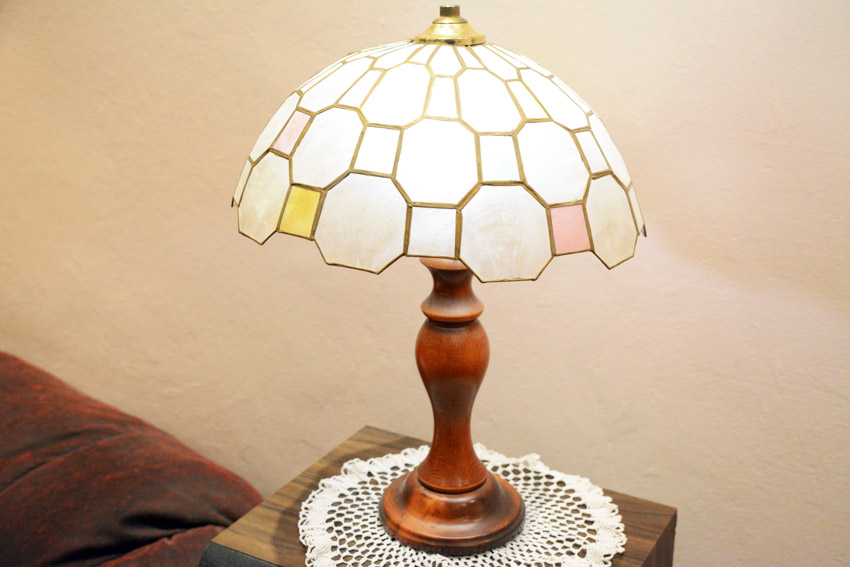
Dome shades work with these styles: Mid-century modern, retro, and contemporary.
Drum
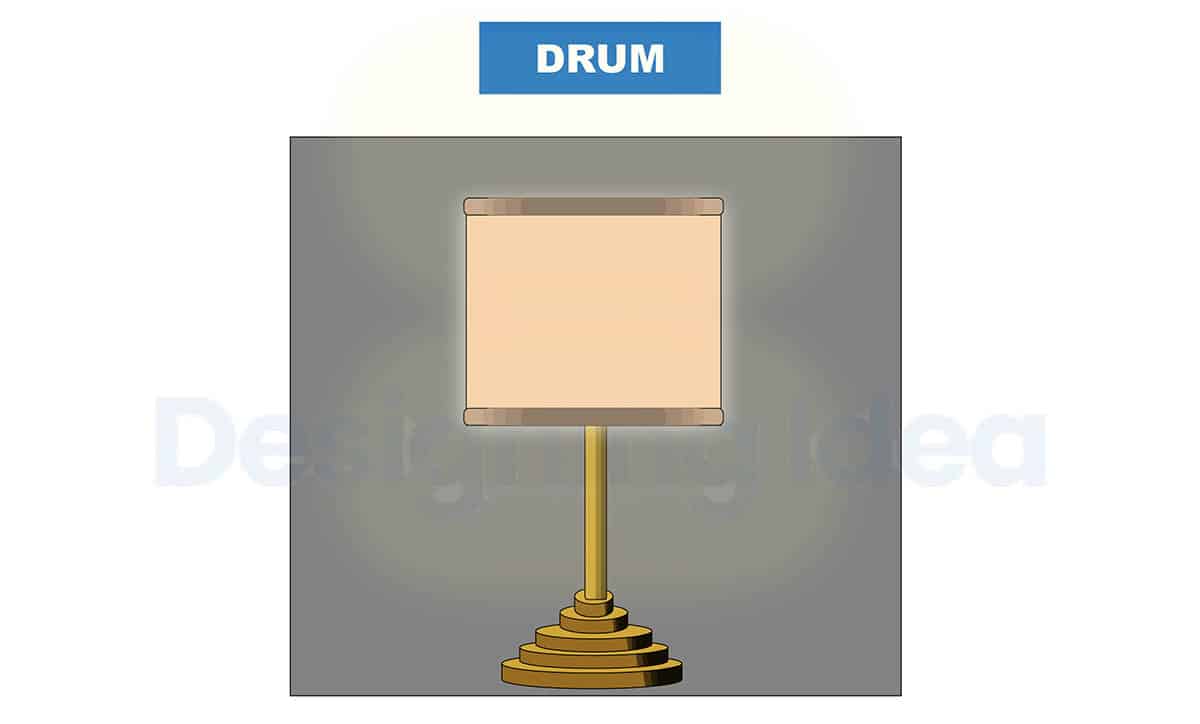
The sleek, simplistic features of a drum lamp shade, also known as a barrel shade, complement the aesthetic of a transitional or mid-century contemporary desk lamp, ground lamp, overhead light, or hanging light.
Drum types of lamp shades are available in a multitude of colors and materials, such as shantung fabric, linen, parchment, and patterned cloth formed over brass and steel parts.
Other geometric designs, such as shallow square and rectangular drum shades, have become increasingly popular in addition to the round drum shape, since they, too, stress a clean and sophisticated interior decoration aesthetic.
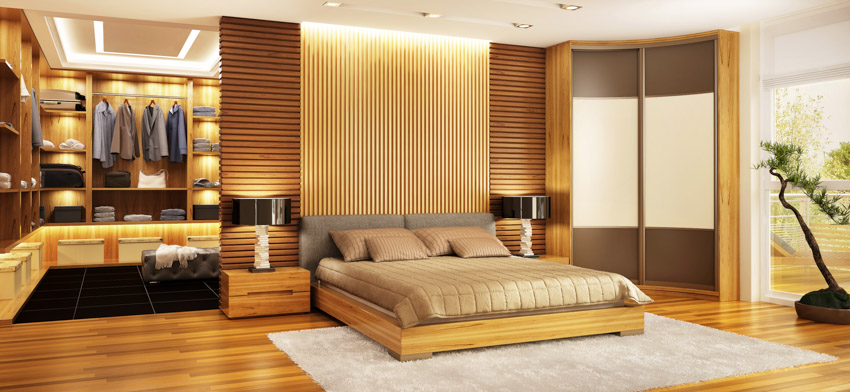
Pictures of drum-shaped lamps on bedside tables. A drum shape design is versatile and works best with these styles: Modern, contemporary, transitional, Scandinavian, minimalist, coastal, and traditional.
Fluted
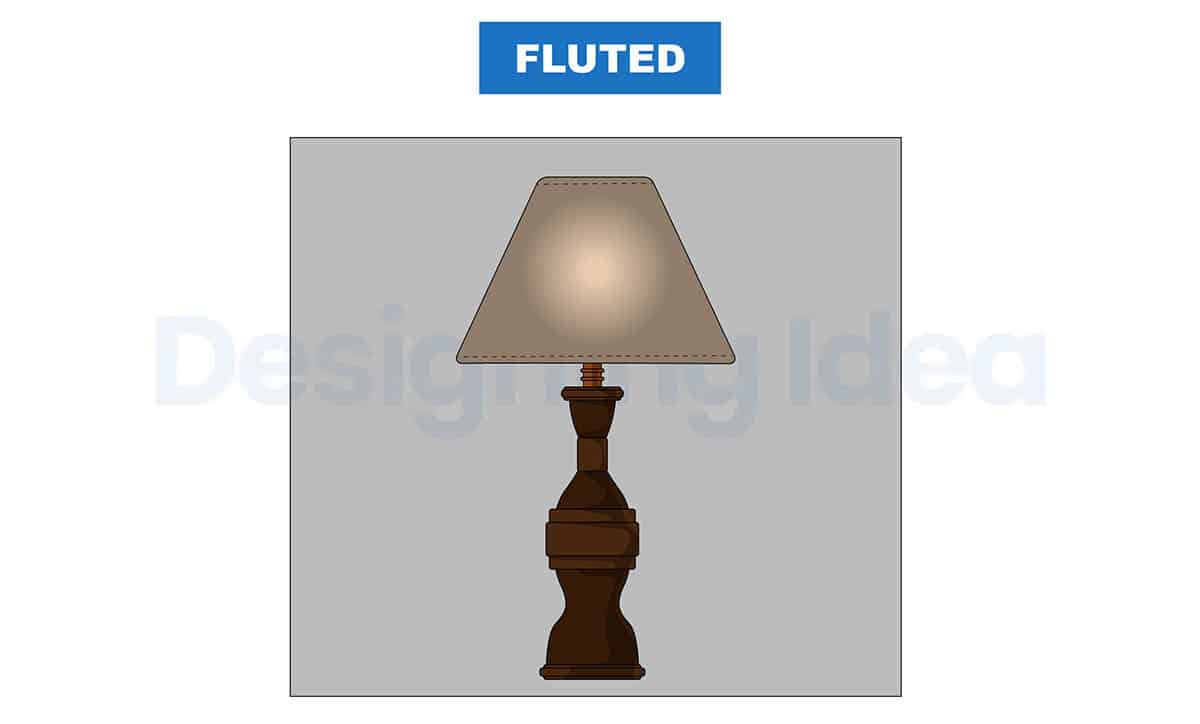
Fluted lamp shades are an undeniably stylish choice for jazzing up any interior scheme. Ridges or grooves trace along their surface, generating a textured effect that is not only subtle – it’s downright sophisticated. It augments depth and character in the most enviable of ways, truly enhancing the overall design with charming allure.
The warm dappled light shimmering over the ridges creates an enthralling visual delight, instantly drawing your gaze to the divine fluted lamp shades. These timeless fixtures – handcrafted using fabric, glass or metal – can inject a hint of classic grandeur to any room.
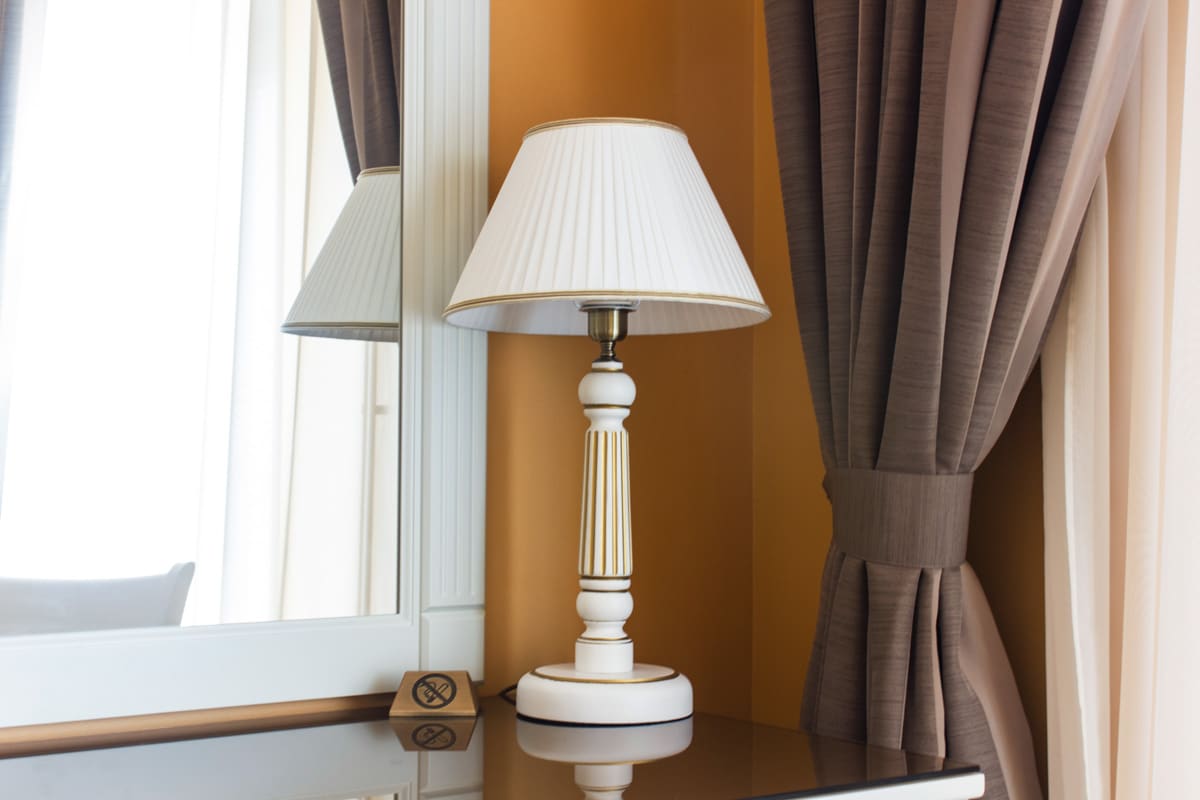
Fluted shades work with these types of interiors: Traditional, vintage, classic and antique.
Pleated
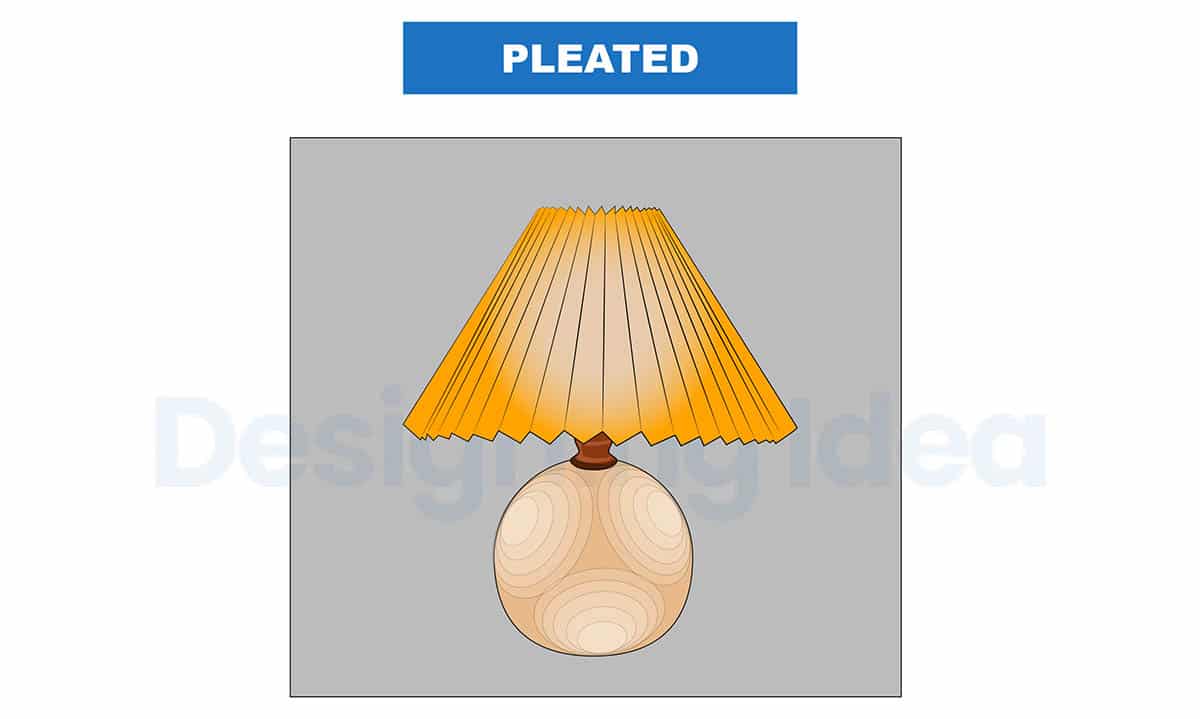
Pleated lamp shades are oh-so timeless and never go out of style. Perfect for bringing an air of sophistication and refinement to any room, these lamp shades take your interior design game up a notch with their accordion-style folding fabric – featuring gorgeous vertical or diagonal pleats.
These lamp shades boast delicate crisp pleats, creating a layered texture and a luxurious charm. Their beauty is enhanced by their material; usually silk or satin for an even more chic touch. Pleated lamp shades possess this ethereal allure, which effortlessly complements both classic and contemporary décors while adding a gentle serenity to any space.
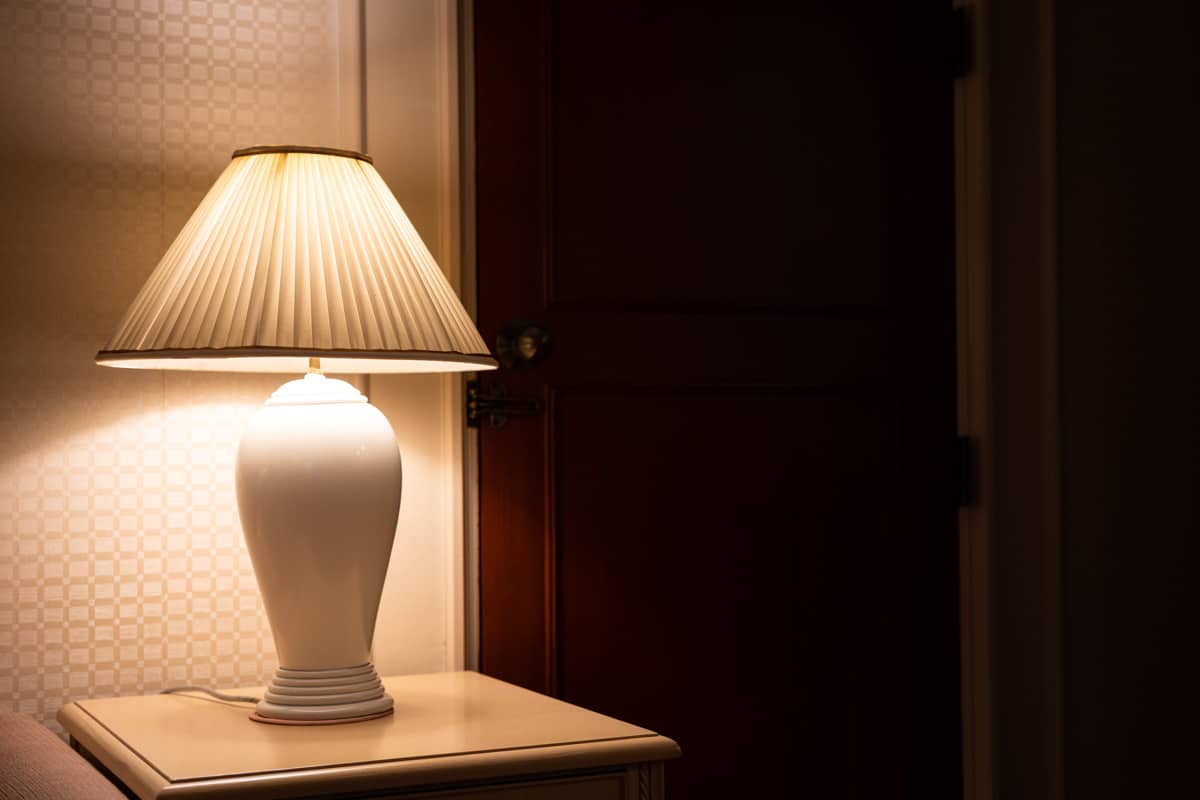
Pleated designs go best with these interiors: Classic, traditional, vintage, antique, and formal settings.
Scalloped Edge
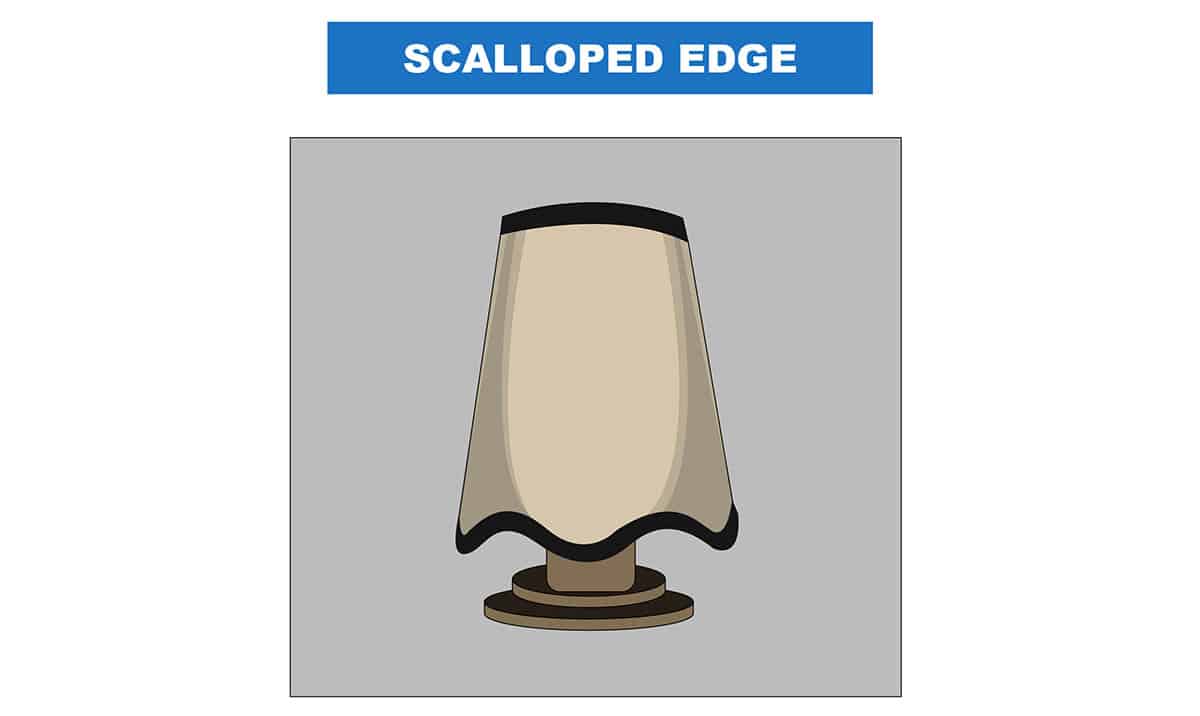
Indeed, scalloped edges give any room an oh-so charming air of sophistication. Just like you’d find sweet scallop shell shapes lapping at the shoreline, these prepossessing lamp shades add a whimsical hint of femininity. Whether you’re after something subtle or eye-pleasing, one thing’s for sure – these lamps are guaranteed to leave an impact.
Achieving that classic, scalloped look is a breeze with artsy techniques like fabric manipulation and intricate trimmings. An enchanting lamp shade with graceful, old-fashioned outlines appears in no time. And on top of that, this elegant edge complements gorgeously with the picturesque and vintage decor to create a soft and inviting atmosphere.
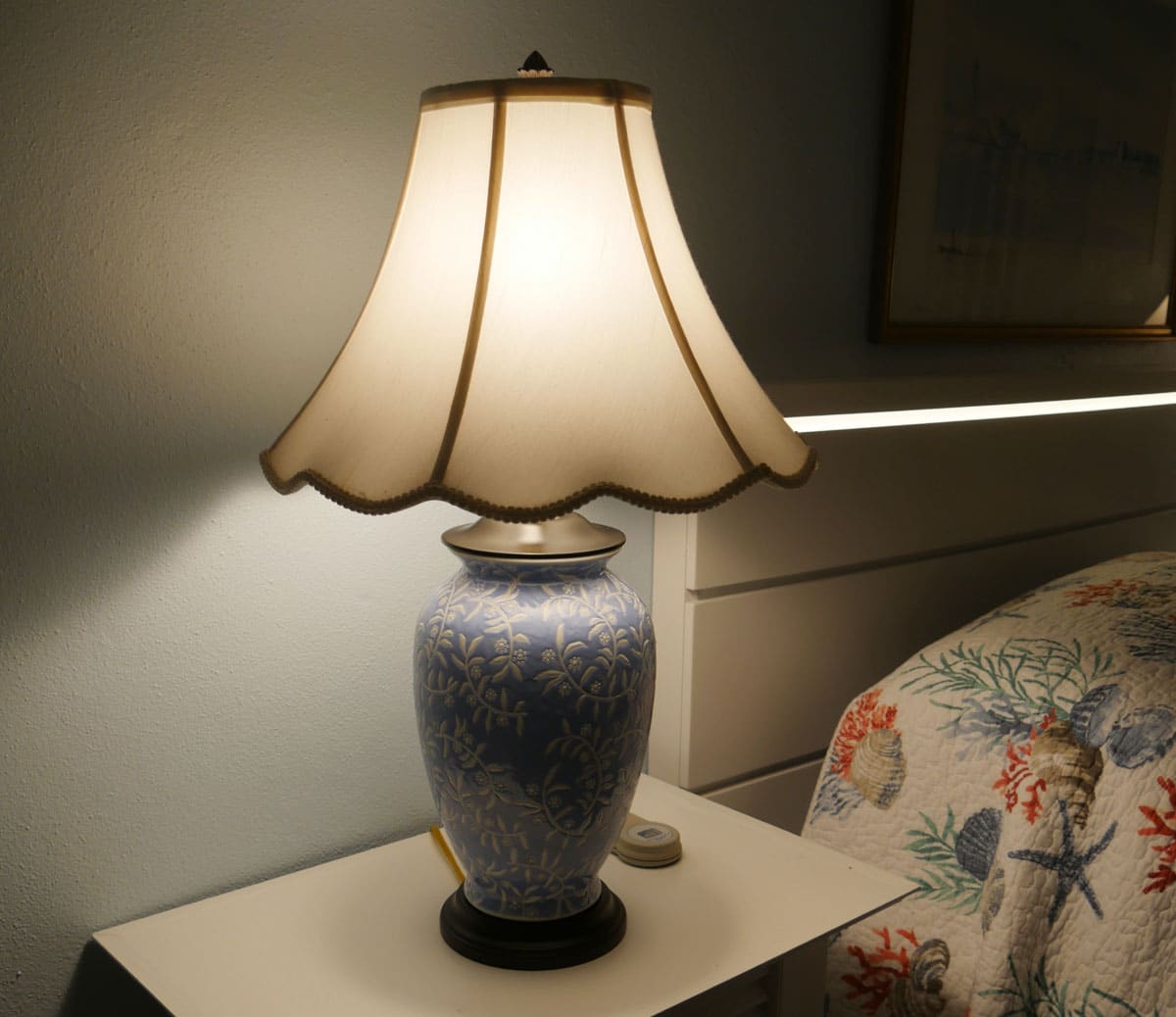
Styles that go with a scalloped edge profile include: Shabby chic, cottage, French country, coastal and romantic.
Rolled Edge

Rolled edge shades, are a pretty modern way to give your lamps an update. These shades are crafted from just one piece of fabric that stretches around a cylindrical tube, giving them a sleek and minimalist look. The possibilities are endless – you can make any room look chic with these roller shades.
Fabric for rolled shades ranges from sheer and translucent to completely opaque, so you can pick the level of light diffusion and privacy just right. This contemporary-style window conundrum is uber popular in Scandinavian design schemes – letting gorgeous beams cascade through the room while maintaining an effortless, minimal look.
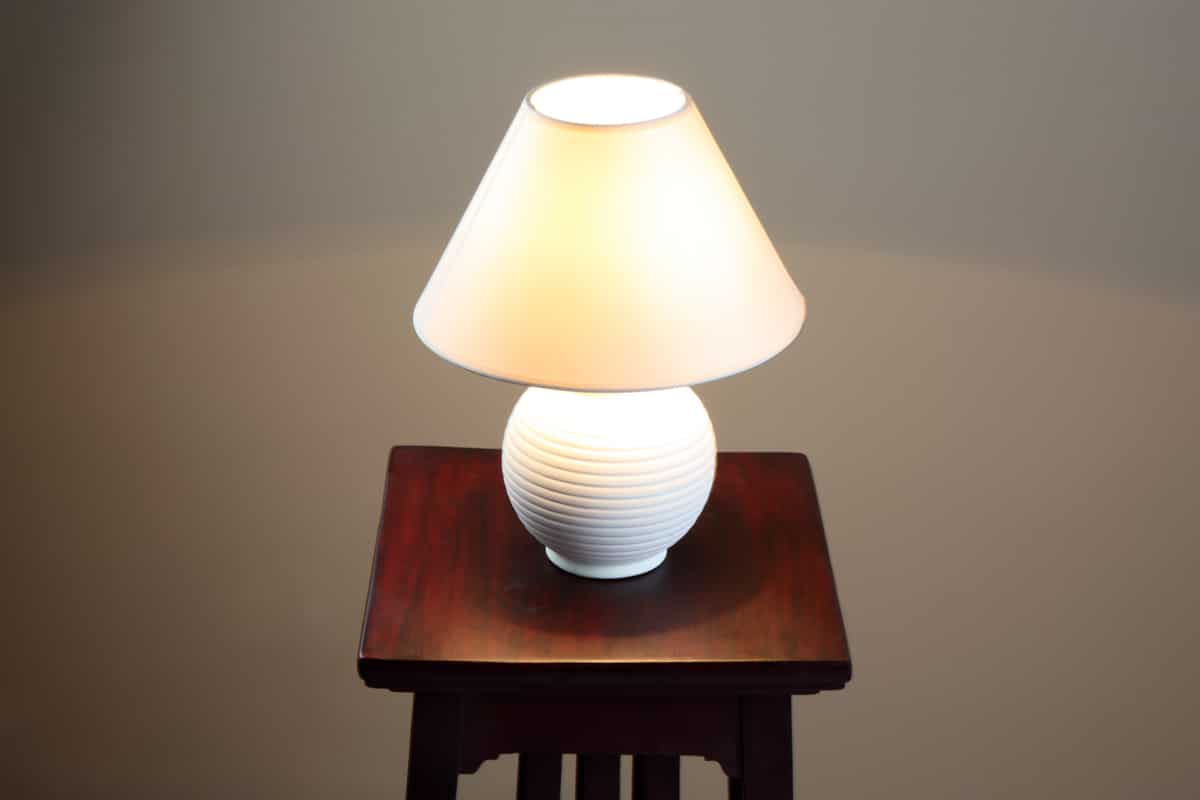
Rolled edge profiles go with the following rooms: Coastal, industrial, contemporary, modern and minimalist.
Hexagon
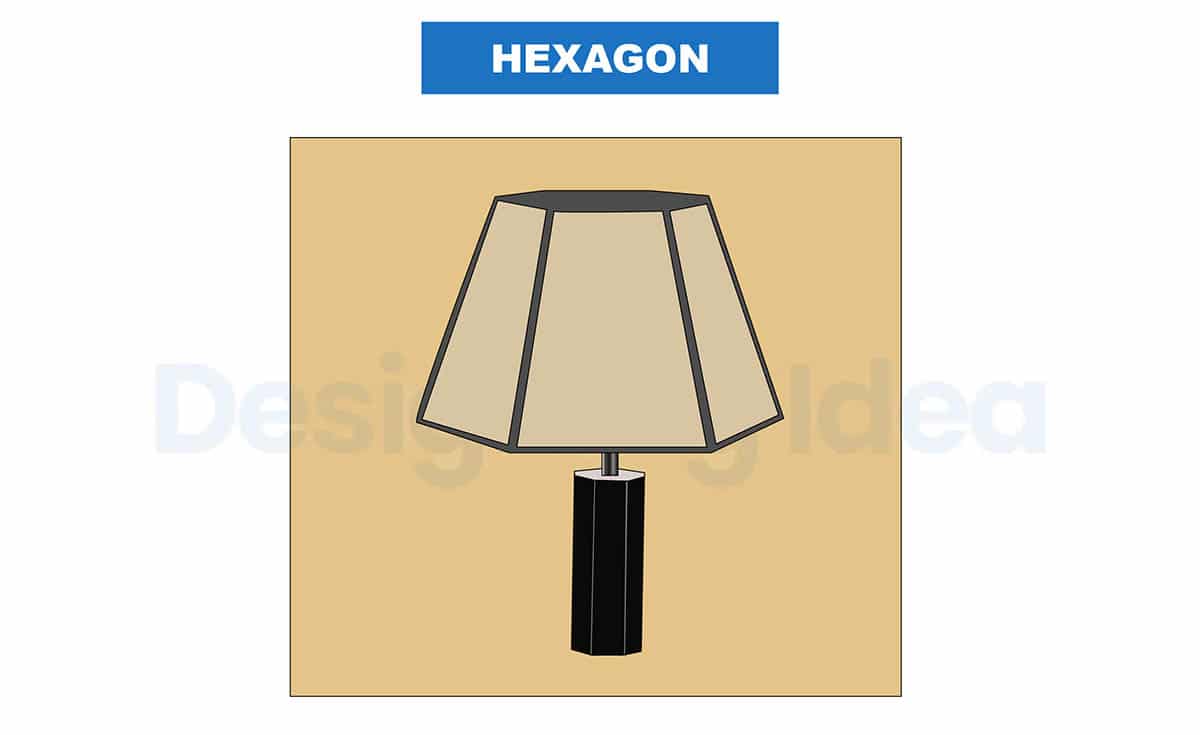
Hexagon lamp shades give any room a modern, creative twist. Taking cues from natural honeycombs, these 6-sided beauties are a must-have; adding an eye-catching statement with their bold geometric look.
Not only do they have great form but also fantastic function – brightening up your space while making it totally stylish and unique. Whenever we come across lamps with a hexagonal element, whether it be the base or the lamp itself, you can bet we jump at the chance to work with them.
After all, not only do these unique shades look effortlessly gorgeous perched atop of their matching bases, but there’s something extra special about the subtle geometrics of the hexagon. It definitely adds more interest and life than a standard round empire or coolie lamp shade.
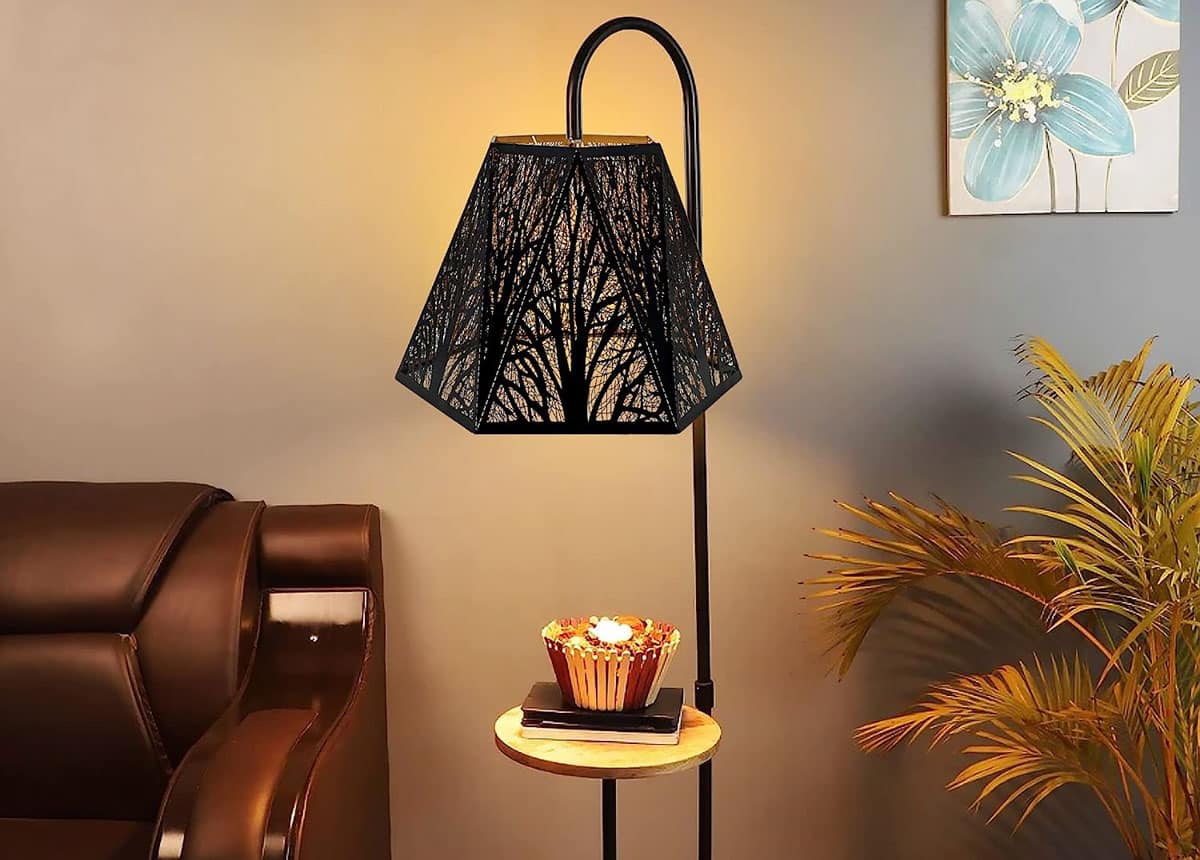
See this hexagon lamp shade at Amazon [sponsored link]
The hexagon shape works with this type of home decor: Eclectic, mid-century modern, industrial, transitional, contemporary
Tapered Drum
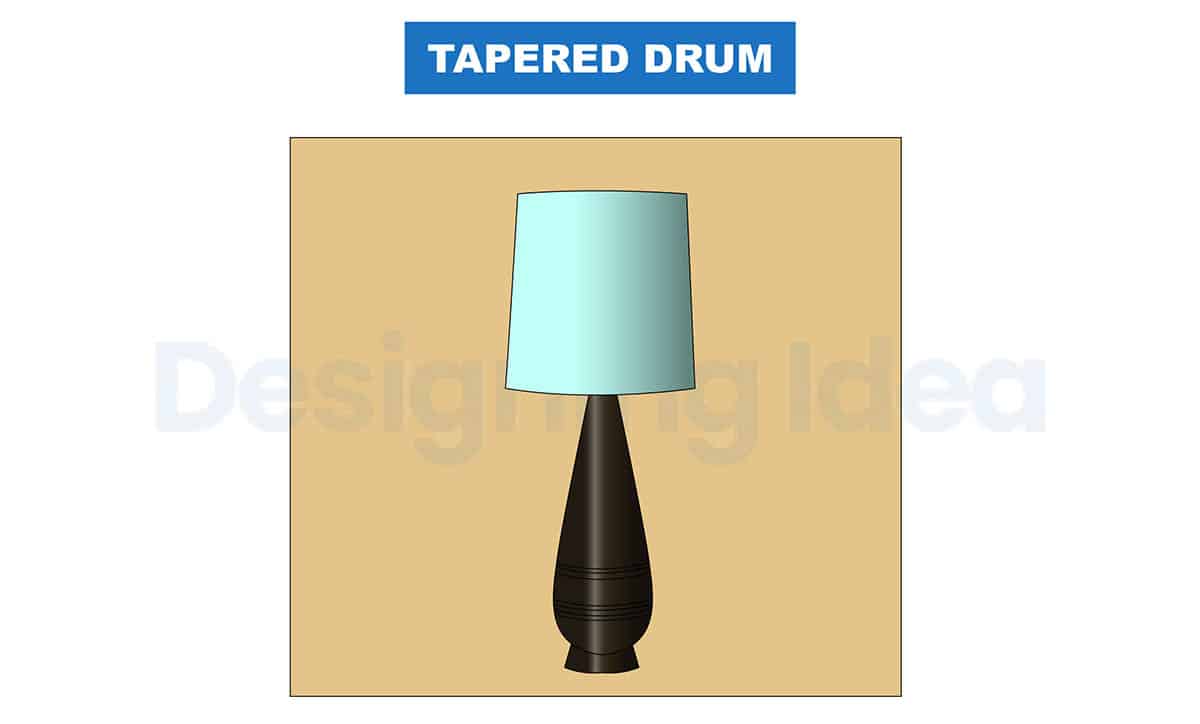
Tapered drum lamp shades blend a classic drum shape with a tapered silhouette, adding just the right touch of flair. These shades boast a wider diameter on the bottom, swiftly narrowing to the top, boasting an exquisite and sophisticated vibe.
There’s no denying it – the tapered design of drum lamp shades offers visual appeal and balance, quickly making them a go-to choice for table and floor lamps. Better yet, they’re crafted from the likes of fabric or parchment for an array of textures and light diffusion; so they’ll always suit your space, be that traditional or contemporary.
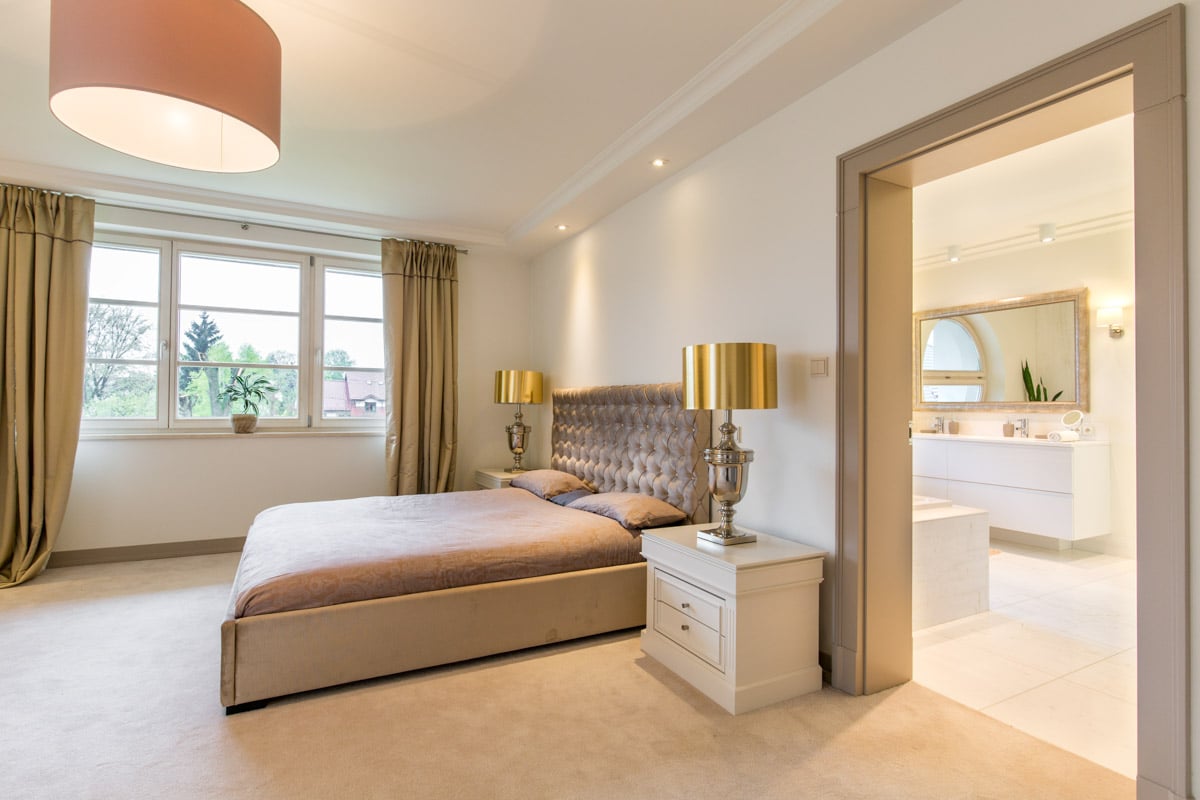
The tapered design goes with the following decor themes: Transitional, contemporary, mid-century, Scandinavian, coastal, occasionally bohemian, modern, and industrial.
Rectangle
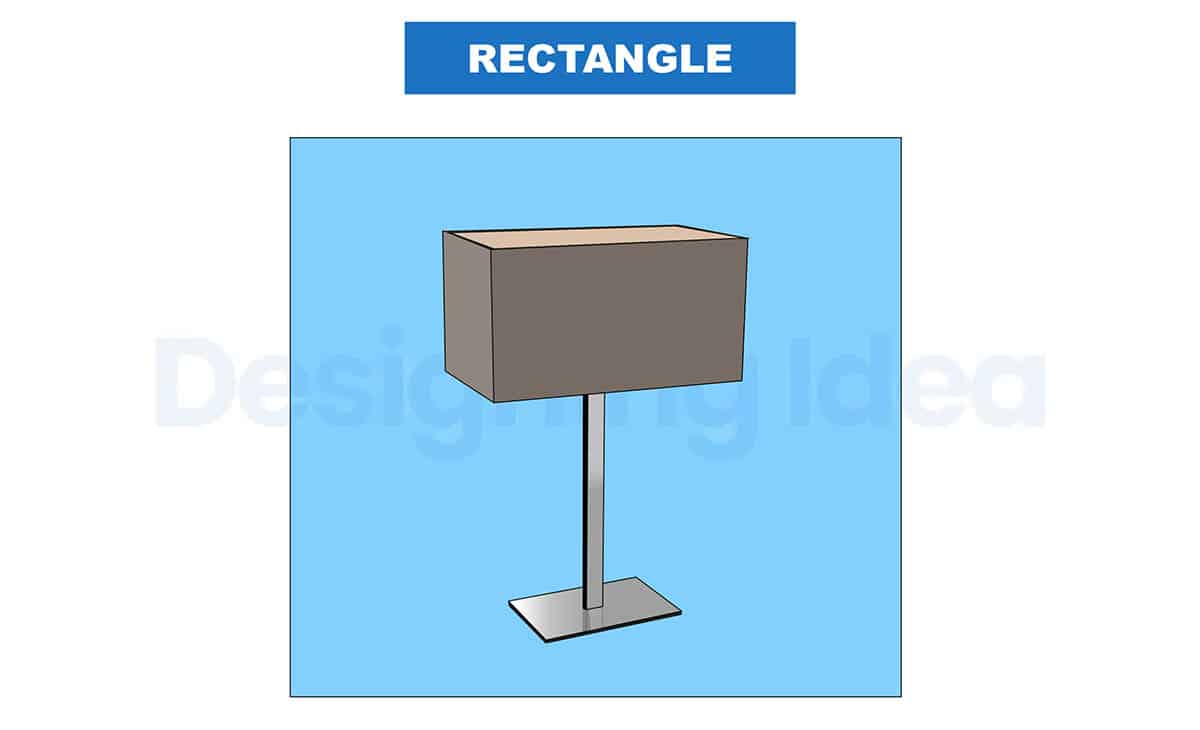
Rectangle lamp shades are an ideal choice for stylish contemporary interior spaces. With their elongated and linear silhouette, they bring a unique sense of modernity and sophistication into the room.
Their clean lines and sharp corners create a sleek, timeless aesthetic – perfect for modern minimalist décor. If you are looking for a way to make a statement with some geometric elegance, rectangle lamp shades are there to do the job.
With options in fabric, paper, or metal, you’ll be able to find the perfect one to fit your room’s decor and diffuse light just the way you want. Whether suspended from the ceiling as pendant lights or placed on table lamps – rectangle lamp shades will level up your living space in no time.
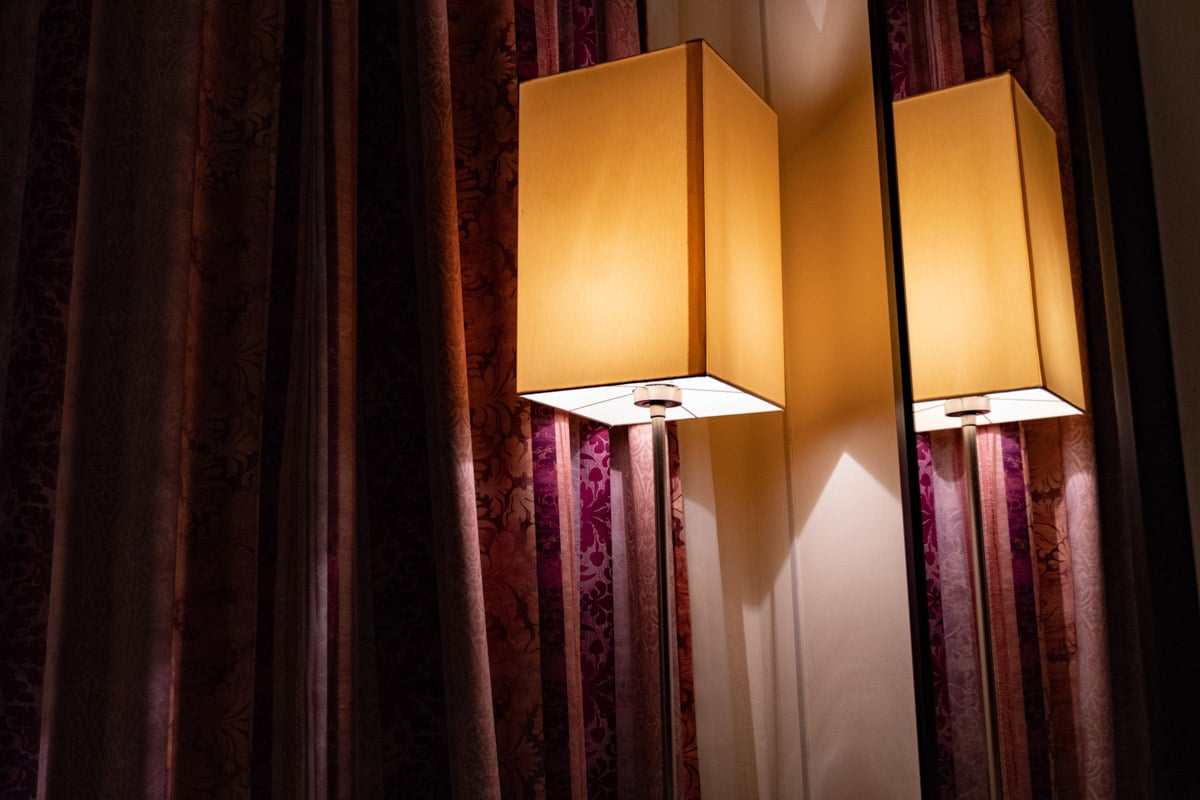
Rectangular shapes go with these rooms: Contemporary, modern, transitional, and minimalist.
Coolie
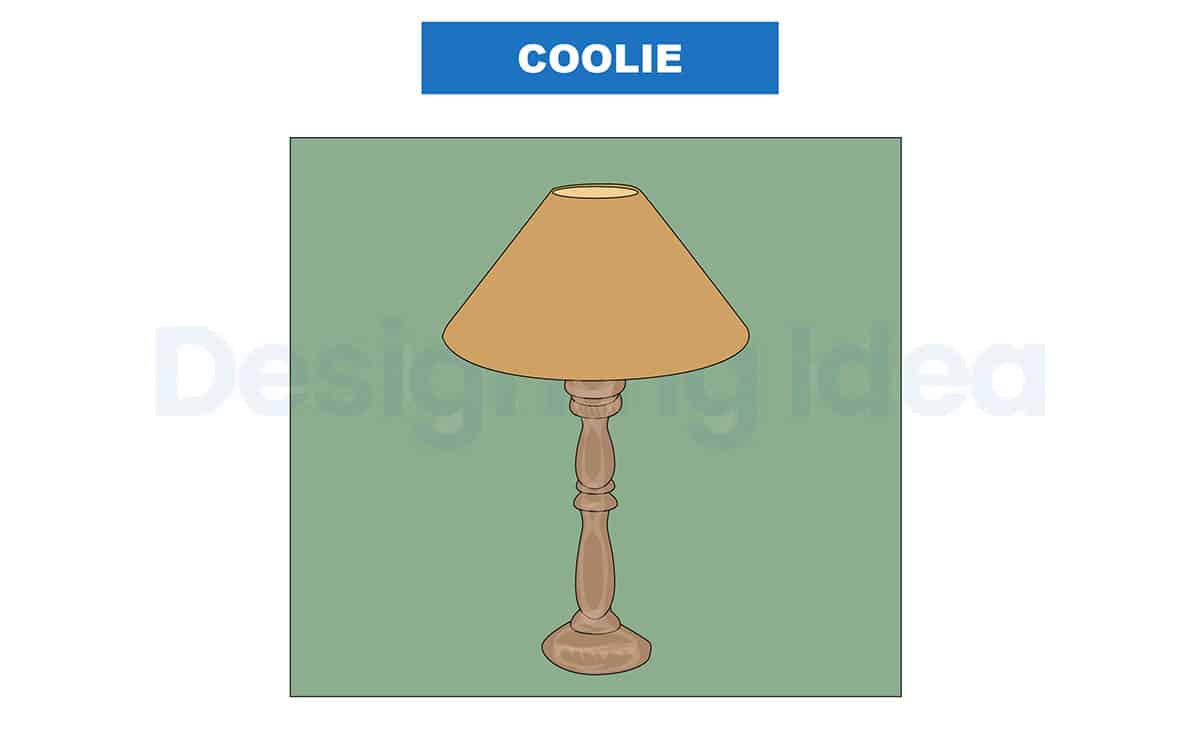
Coolie lamp shades, or empire shades as they’re sometimes called, give off an Asian vibe with their sloped and flared shape. Like a true conical hat, the hue gradually tapers all the way to the top. And that’s where “coolie” came from—an ode to its inspiration.
Coolie lamp shades – a classic, timeless look that never goes out of style. Indeed, with their wide range of materials – think fabric, paper, or even rattan – they can add an infinitely chic and inviting texture to any room. Not only do they offer elegant visual appeal but they bathe the space in a warm glow – perfect for creating a cozy ambiance in your bedroom or as one of you living room essentials.
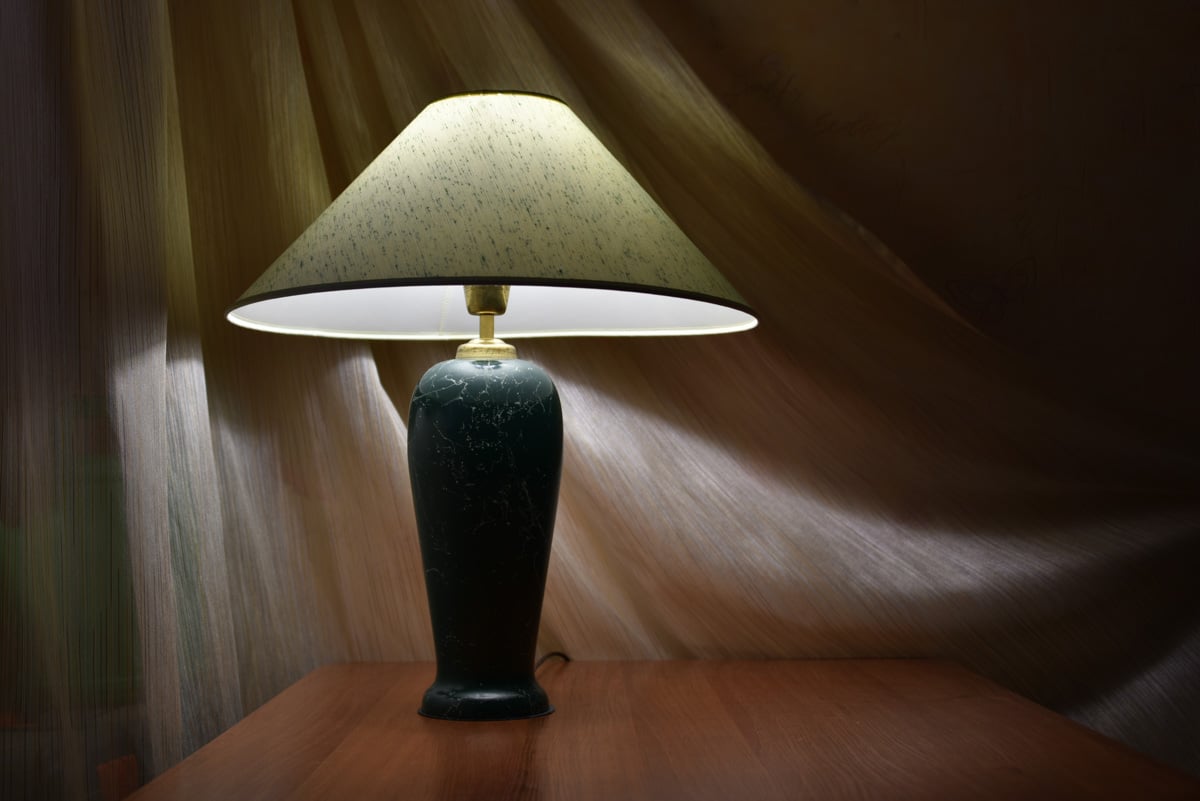
Coolie style lamps go with these designs: Bohemian, coastal, shabby chic, country, cottage, vintage and traditional.
Cylinder
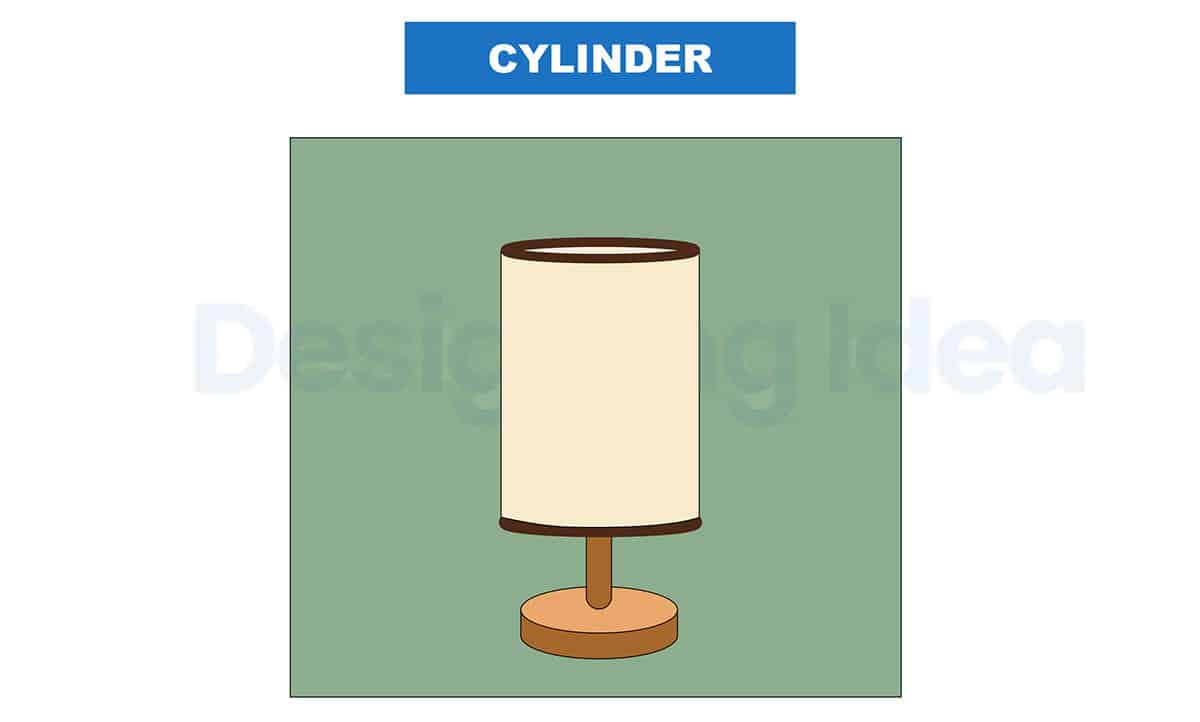
Cylinder lamp shades are a winning choice for any room, adding a contemporary and stylish flair. True to their name, these lamp shades have a classic cylinder shape – equal at both ends – perfect for anything from an industrial chic look to minimalist décor. Strikingly simple but full of modern panache, cylinder lamp shades can be used to generate various impacts.

Cylinder shades go with this look: Modern, contemporary, industrial, transitional, and minimalist.
Pagoda
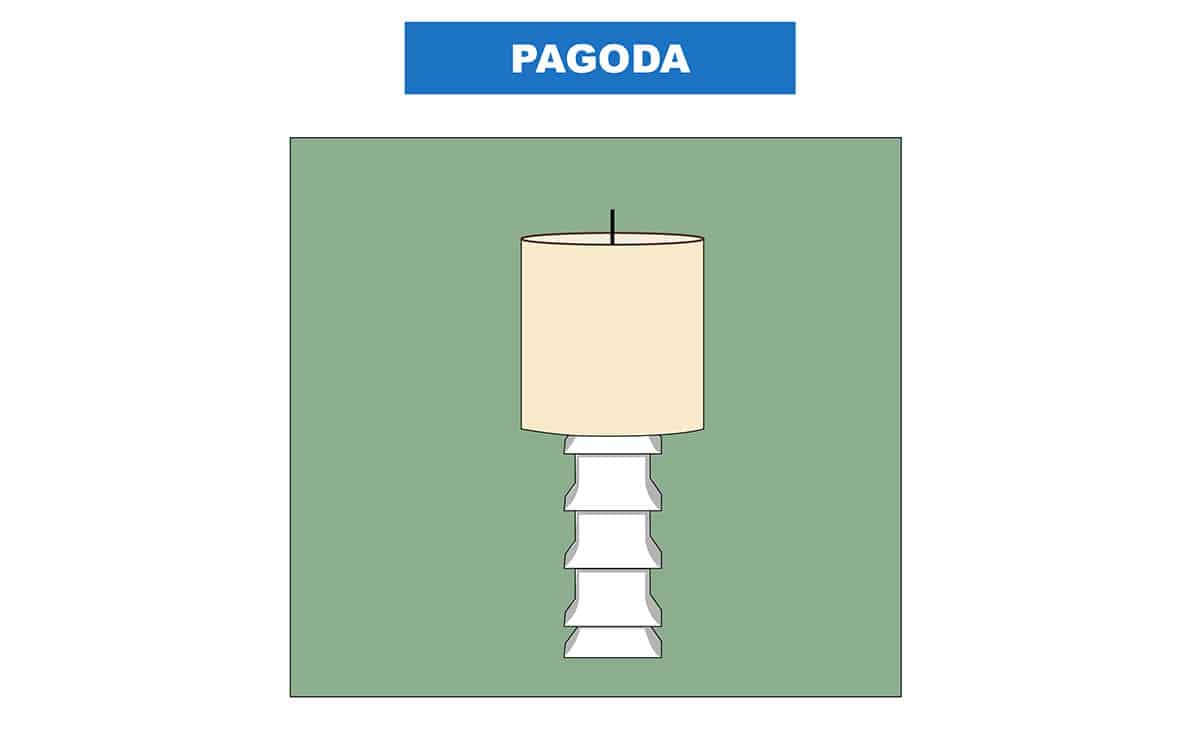
With their unmistakable tiered and sloping roofs, they’re a real tribute to classic Asian architecture. You don’t need us to tell you that – just take one look and you’ll see these distinctive lamp shades resemble mini pagodas. And the beauty of them? They boast an amazing assortment of layers; each tier gets gradually smaller from bottom to top.
Thus, if you are looking for a lamp shade with serious style, you have to look no further than the Eastern-inspired Rectangle Pagoda. Crafted in perfect symmetry, this one-of-a-kind shade features sharp angles and curvaceous lines reminiscent of Far East pagodas; making it the ideal piece to spruce up any lamp.
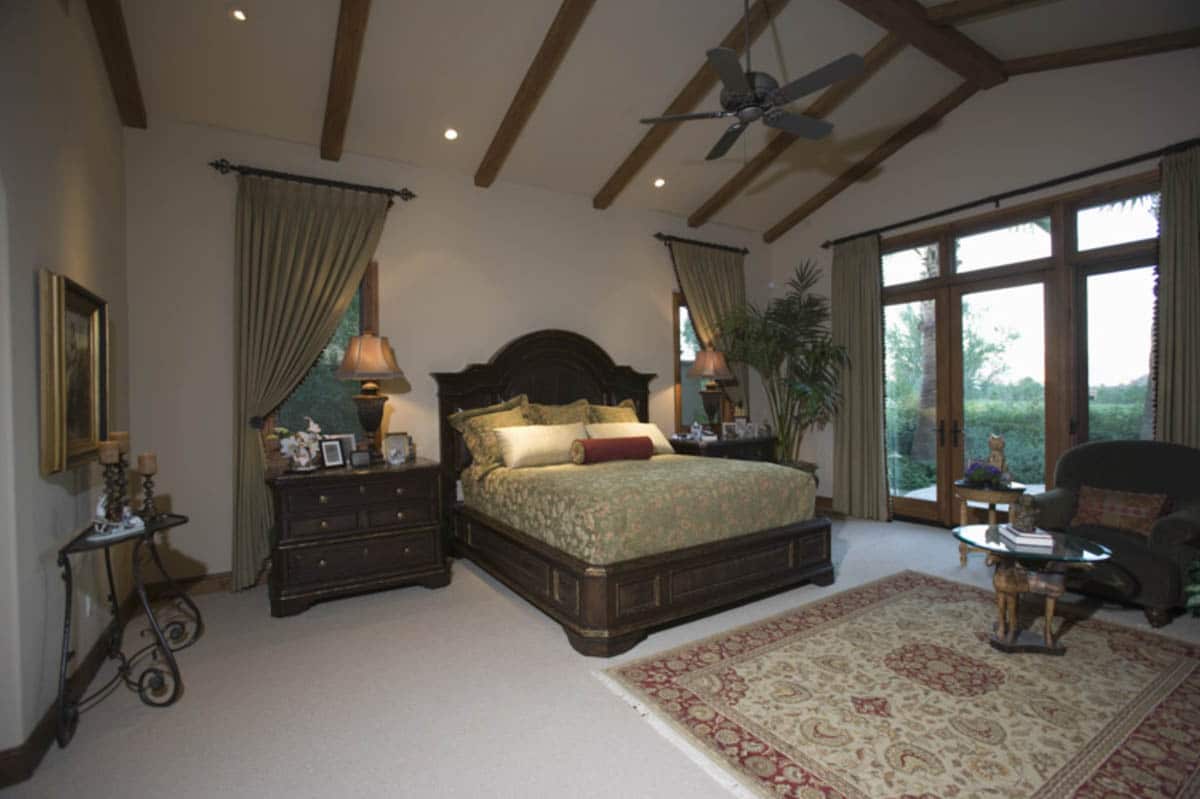
The pagoda lamp goes with these different rooms: Asian, traditional, eclectic, bohemian, and Hollywood Regency.
Oval
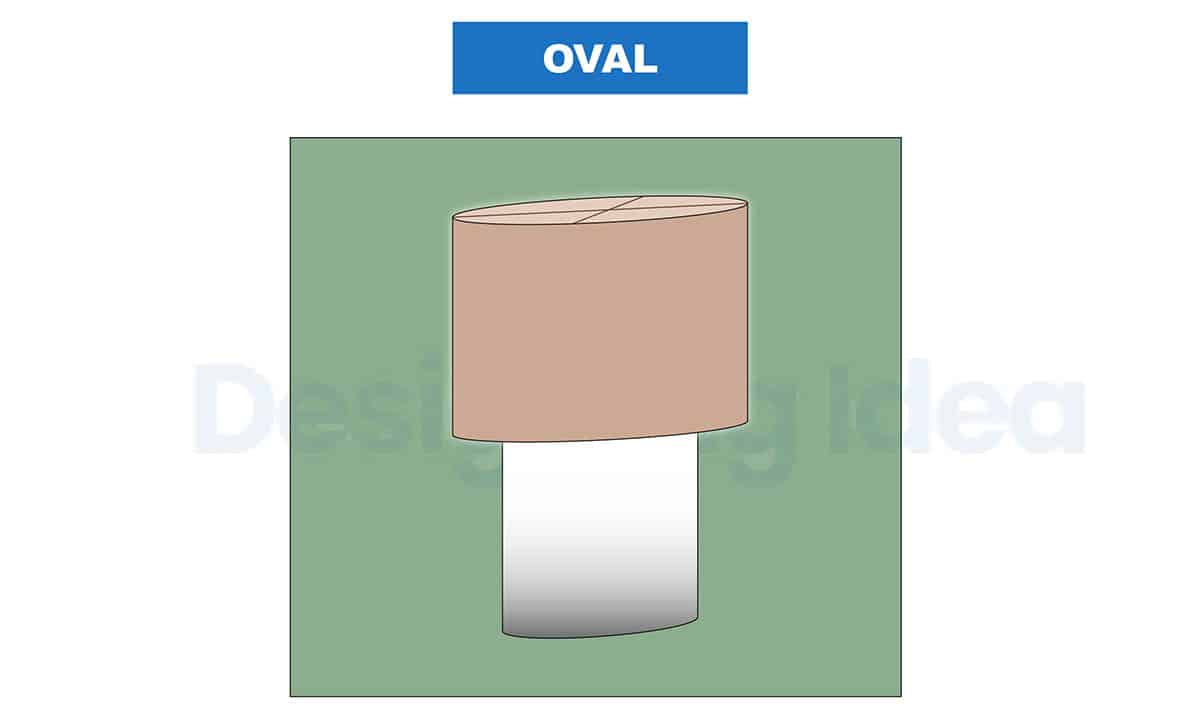
Oval lamp shades are a stylish and bold choice for any room – from fabric to glass, the variety of textures and materials is simply tantalizing! You can undoubtedly feel the fashion of a fabulous oval lamp shade – with its distinctively circular closed form featuring width greater than depth. Whether shorter, taller, or narrower/wider on top oval styles can’t be beat.
Hardback options of oval lamp shades are normally crafted using top and bottom rings with fabric laminated to plastic liners. And for silk shades, there’s a frame consisting of inter-connected wires with a round top ring attached to the bottom ring by vertical wires – defining shape and style in one swoop.
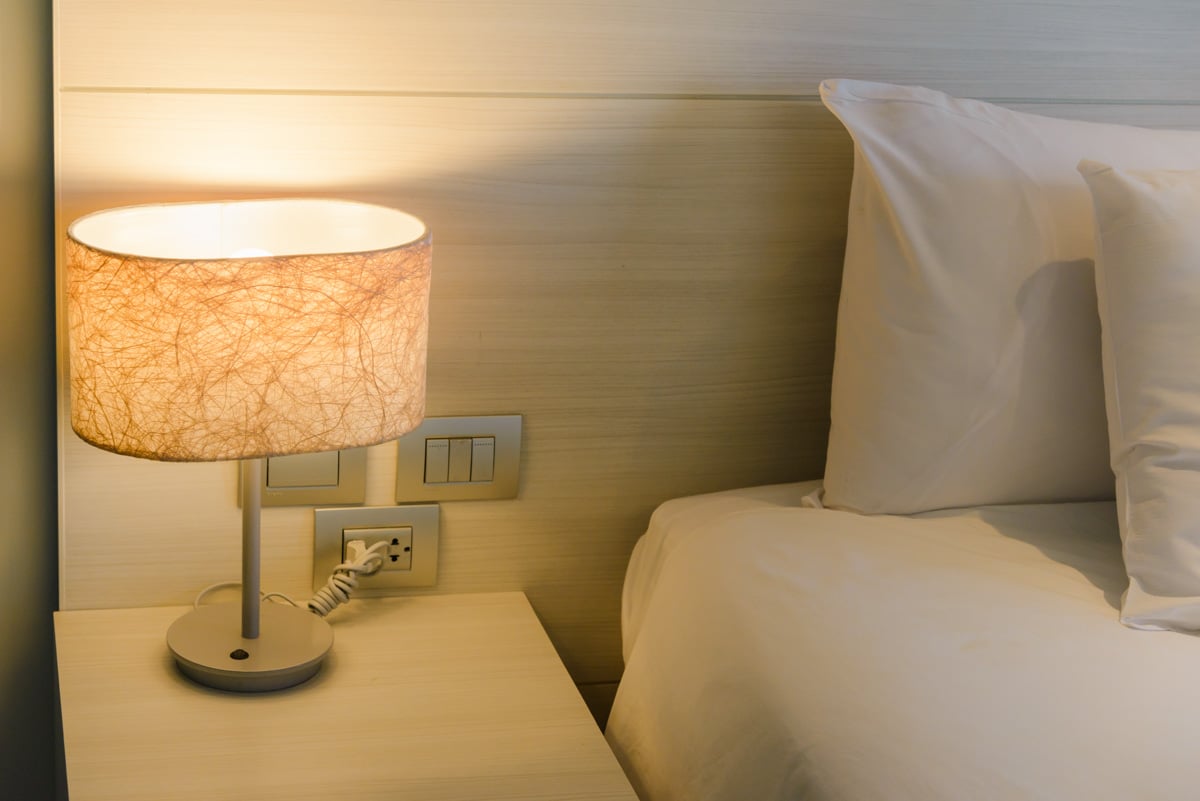
Oval shades go with this decor: Traditional, classic, vintage, Hollywood Regency, and transitional.
Velvet
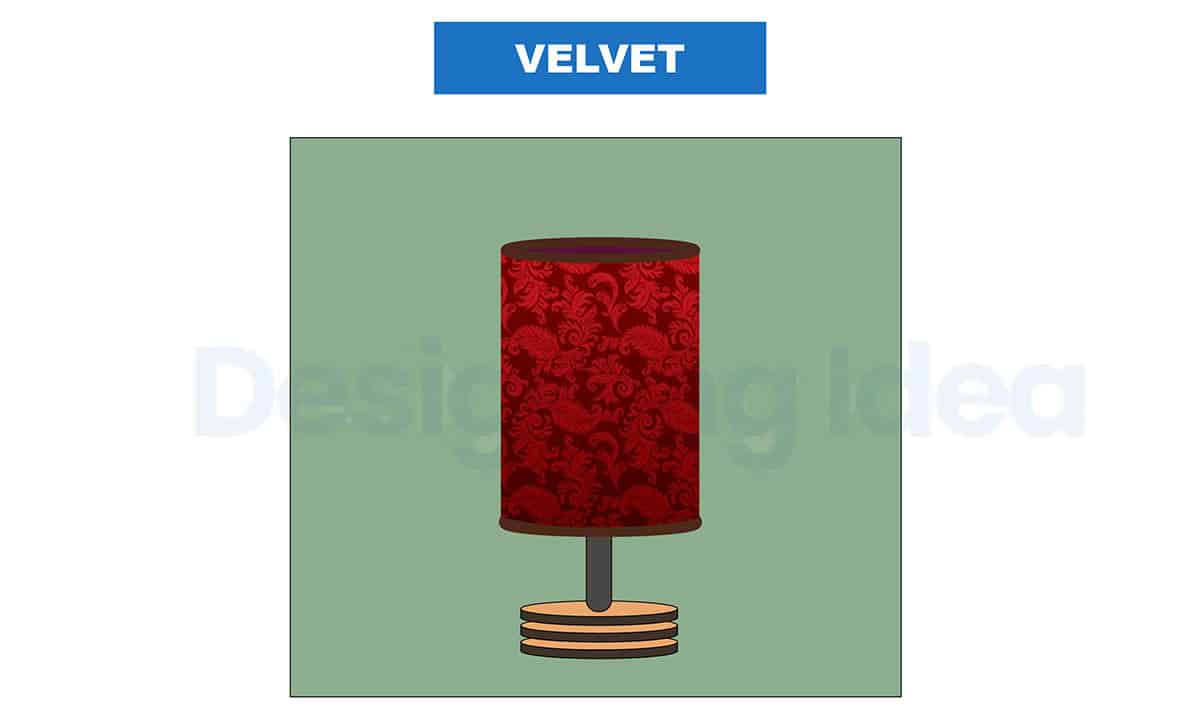
Luxurious velvet lamp shades are all the rage in home décor today. Transitioning away from traditional designs, velvet Drum and Empires have become popular choices – especially when teamed with a metallic lamp shade.
From classic hues to bold shades, they come in all sorts of colors so you can easily find one that perfectly complements your interior. Not only are velvet lamp shades invitingly elegant, they also add a divine indulgence too good to resist.
Contrasting the plush, velvety feel of many of lamp shade handmade by professionals, a velvet outer and wallpaper inner combine to create an intriguing theme. It’s true: opposites do attract. Lush illustrations or patterns work marvelously against the velvety pile.
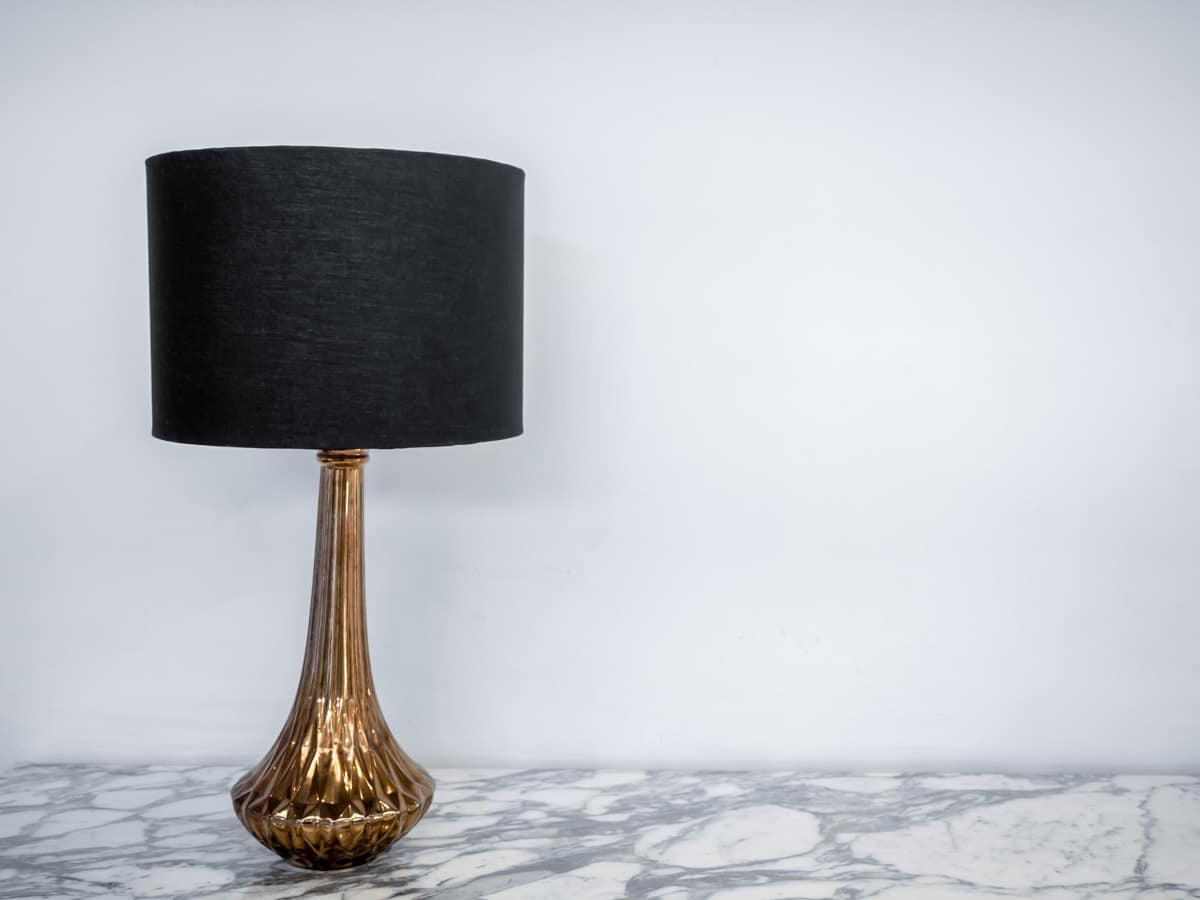
The following styles go with a velvet shade: Classic, eclectic, bohemian, vintage, Art Deco, and Hollywood Regency.
Cotton
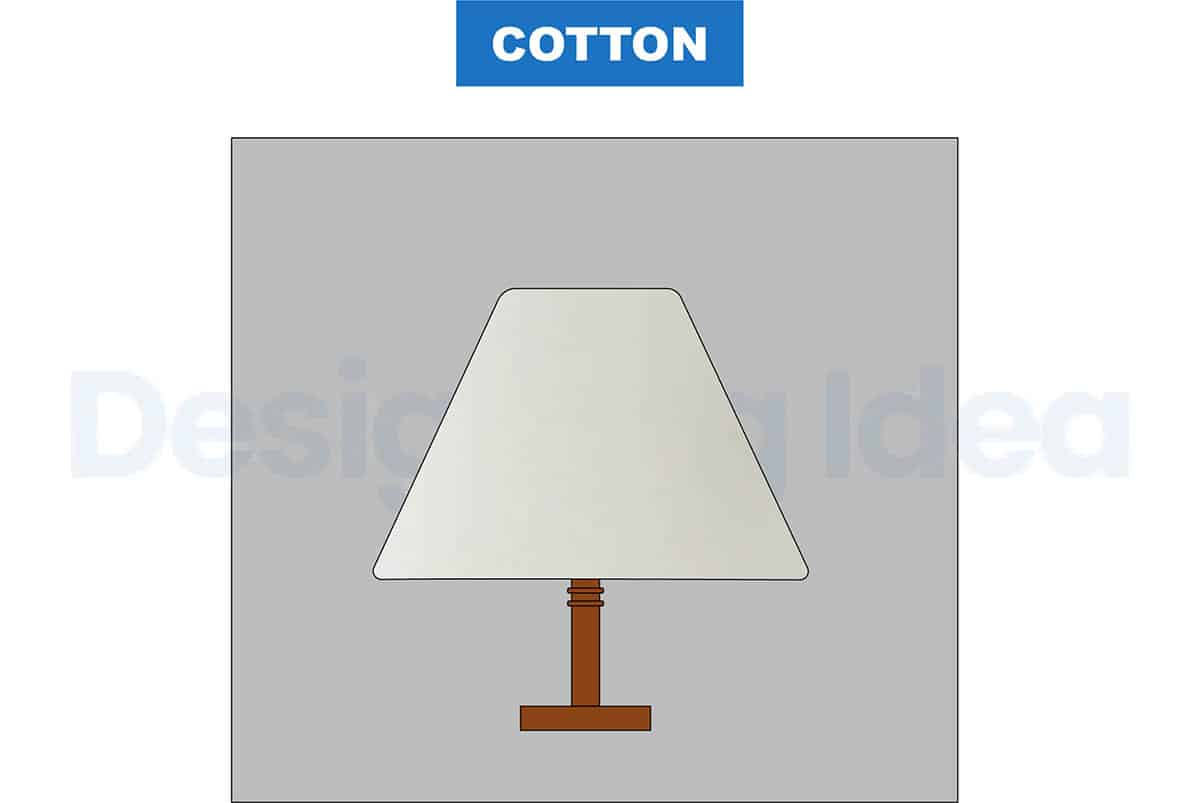
Cotton is a top pick for lamp shade fabric due to its convenience when it comes to cleaning, plus its flexibility that allows for gorgeous pleated and decorative shades. From classic whites, to colorful prints or luxury textures – soft-touch cotton just might be the top choice.
Soft-touch cotton has a polished look plus a luscious texture – an ideal combination of lightweight and robustness. With its tighter weave than linen or fine linen, there’s no better option than soft-touch for creating beautiful lamp shades.
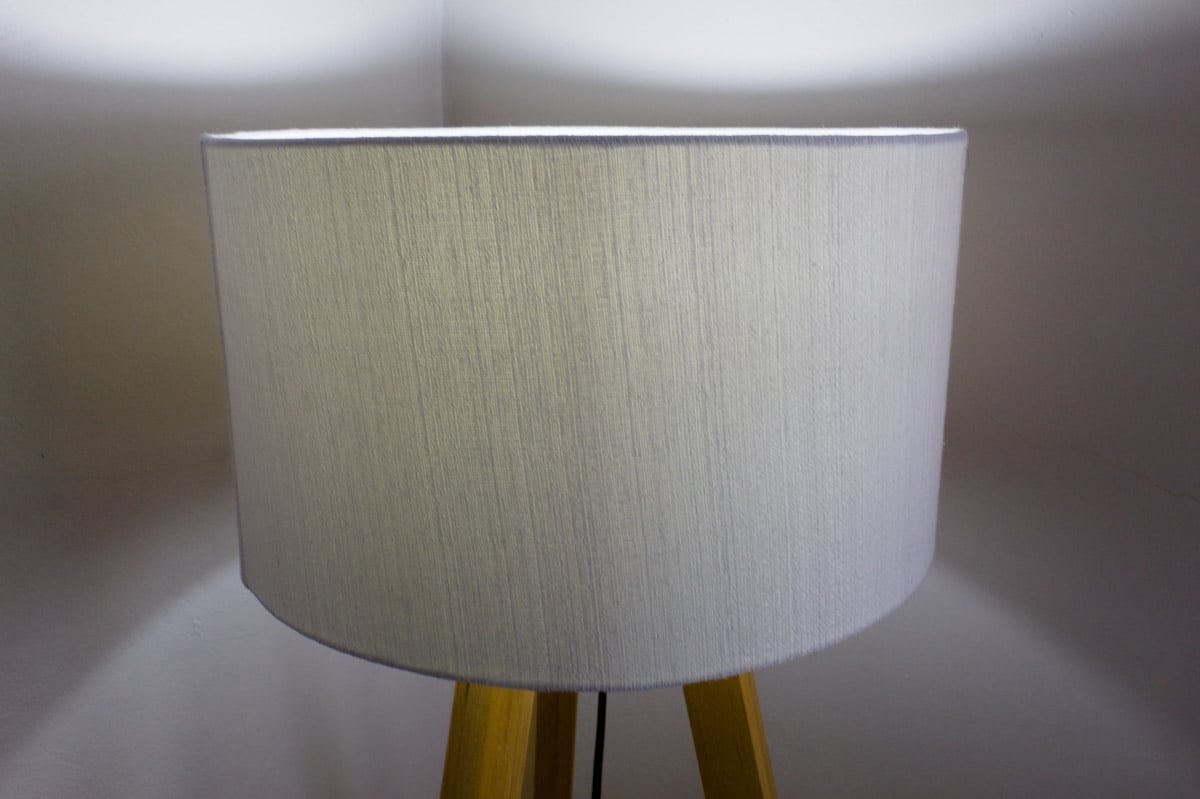
You can easily incorporate a cozy feel to your decorations with a cotton lamp shade. Whether you’re looking for a laid-back lounge or bedroom light fixtures, or an area that tends to get dusty, opt for this type of shade. Not only is it understated and rustic but incredibly easy to clean too – the ideal solution for locations that require regular upkeep.
Types of Shade Fittings
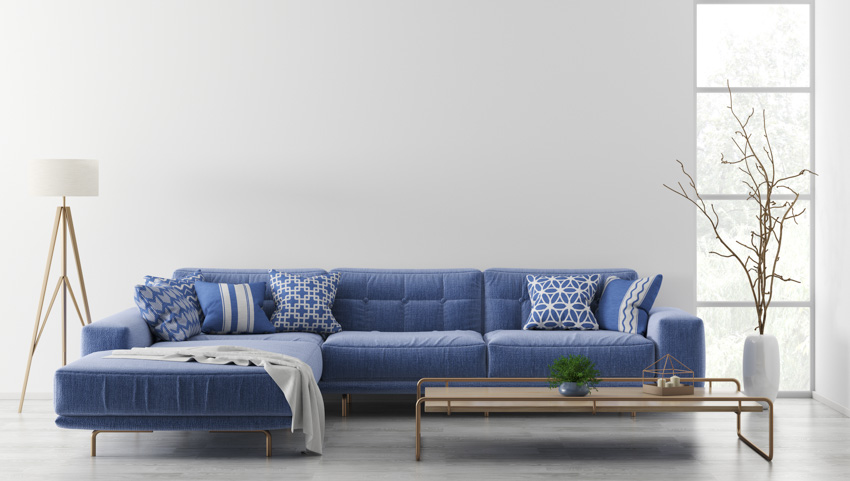
There are various lamp shade designs that you can choose from. However, the styles are predominantly affected by the lamp shade fittings. Let us talk about some of them.
A hardware component known as a fitting adapter must be used to secure the different types of lamp shade to its lamp.
Lamp shades constructed of materials other than glass are referred to as non-glass shades. Let us talk about some of the different lamp shade fittings.
Spider: The most prevalent attachments are spider fittings. They are made out of a center ring with three steel beams emanating from it that connect to the lamp shade’s top framework.
The harp, which is a bent wire structure that spans from the lamp’s outlet over the light bulb, is linked to the center ring. A finial secures the spider fitting to the harp’s upper part.
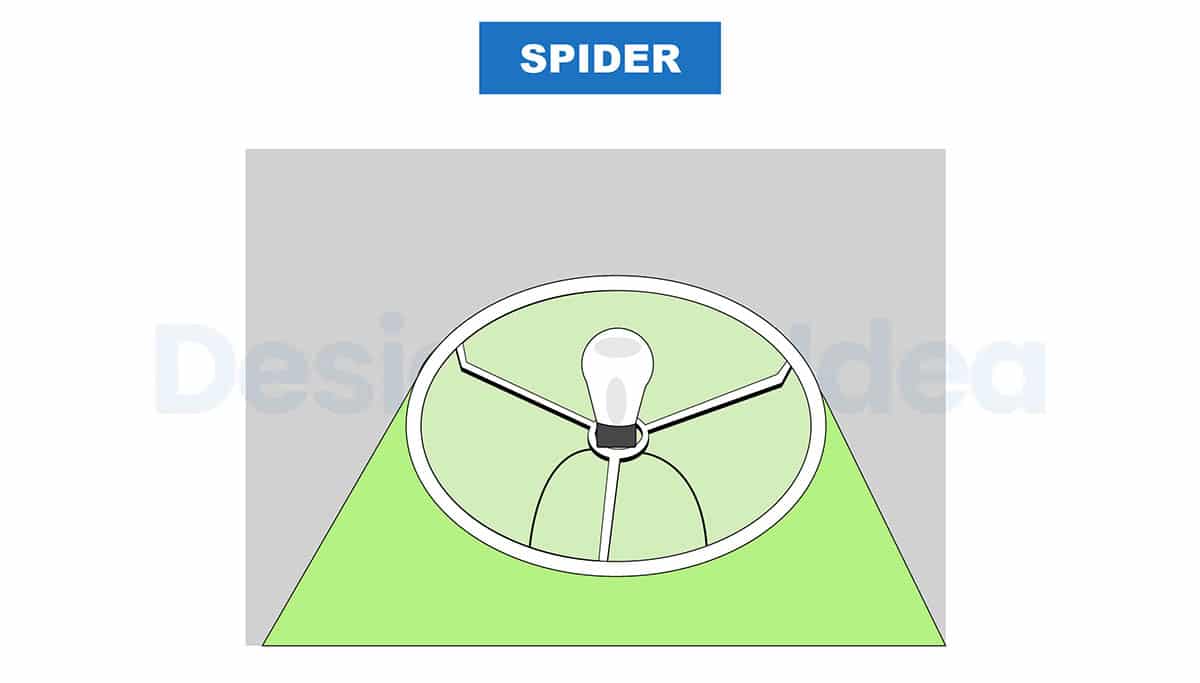
Uno: Uno fittings are directly attached to the lamp along with a lower ring that fits into the socket and is kept in position by the lightbulb.
A harp emerges from the ring and connects to the shade’s upper structure. Small desk lights, swing lamps, and bedroom lamps all have Uno fitting attachments.
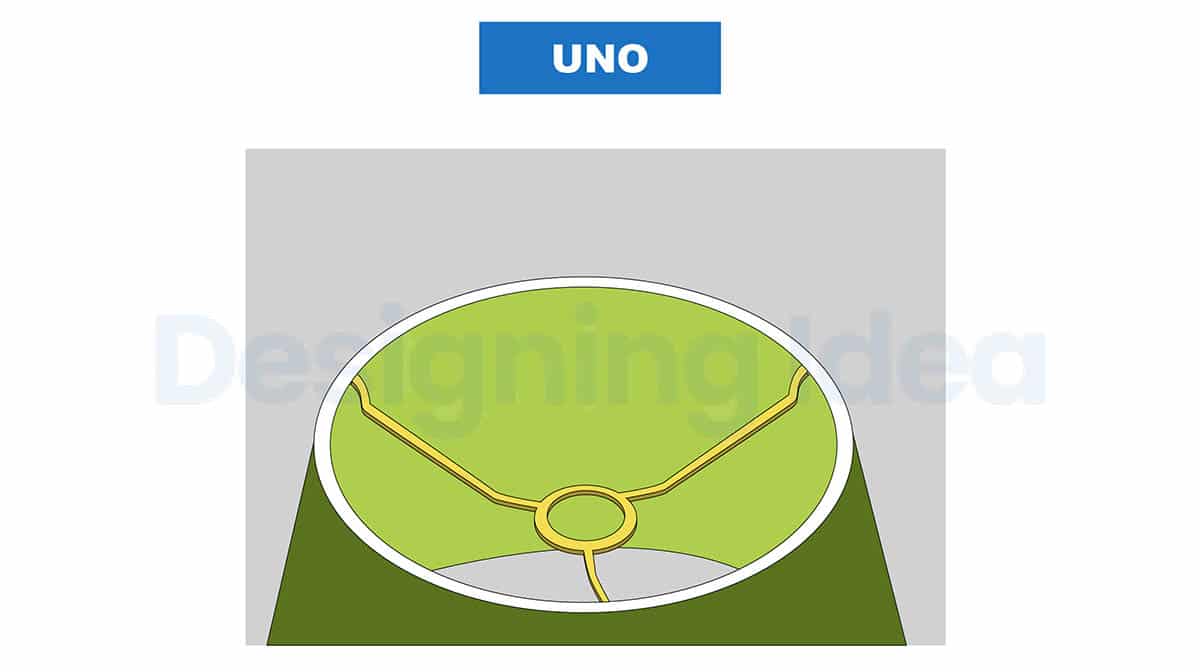
Clip-on: Clip-on types have a small lampshade frame that attaches to the light bulb directly. They’re commonly applied on low-wattage chandelier bulbs and little table lights.
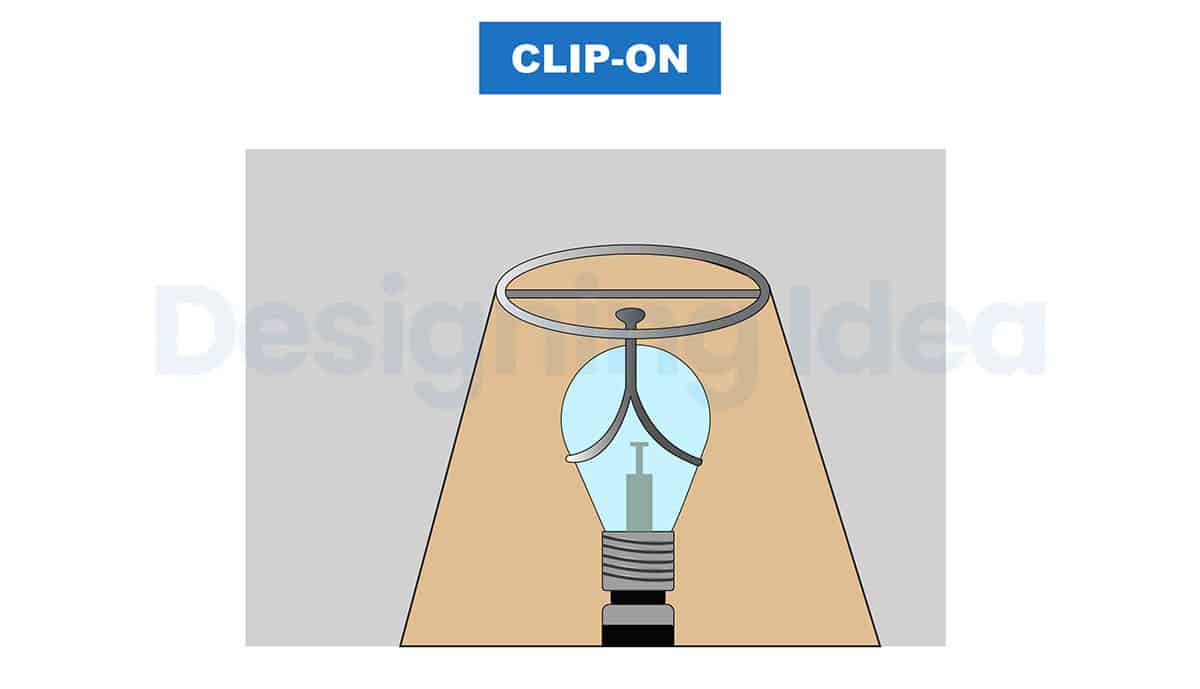
Screw-on: Screw-on fitting attachments are identical to Uno fittings, except the ring base is screwed into the lamp’s outlet. The lamp shade is supported by a harp that extends from the ring base.
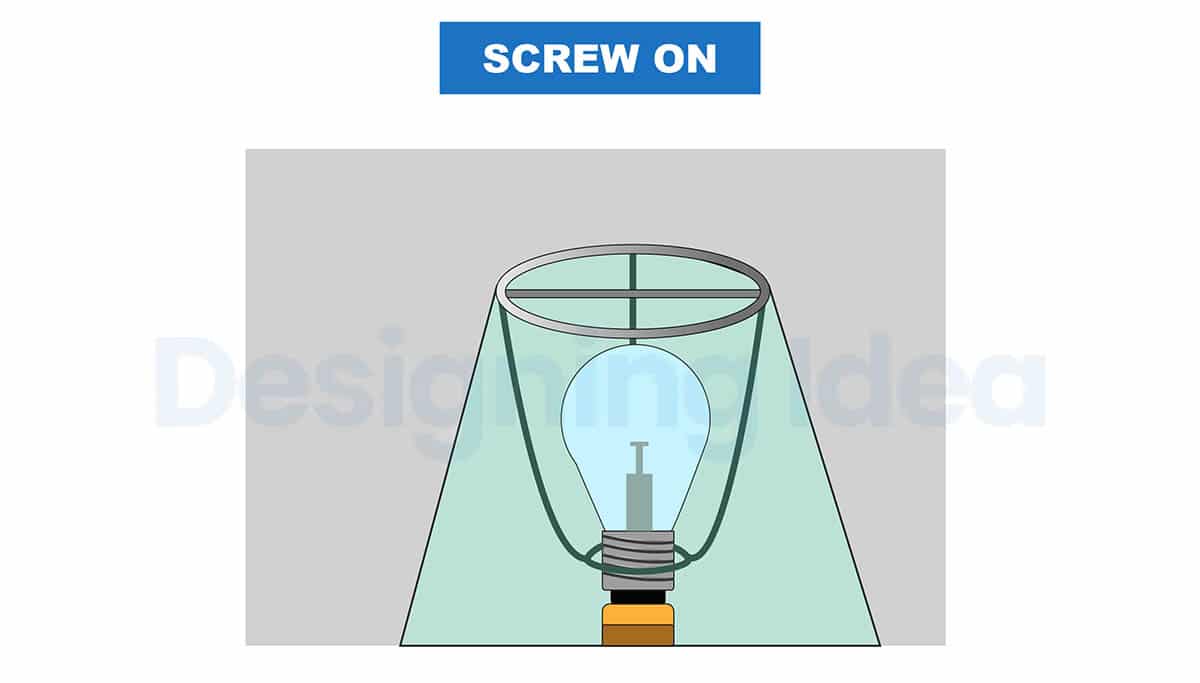
Setting Type: Setting-type lamp shades, also called lipless or straight-type lamp shades, are likewise housed in metal housings but do not have screws to fasten them.
Rather, the lamp shade is held in place by a little round steel plate within the base of the shade that is attached to the housing.
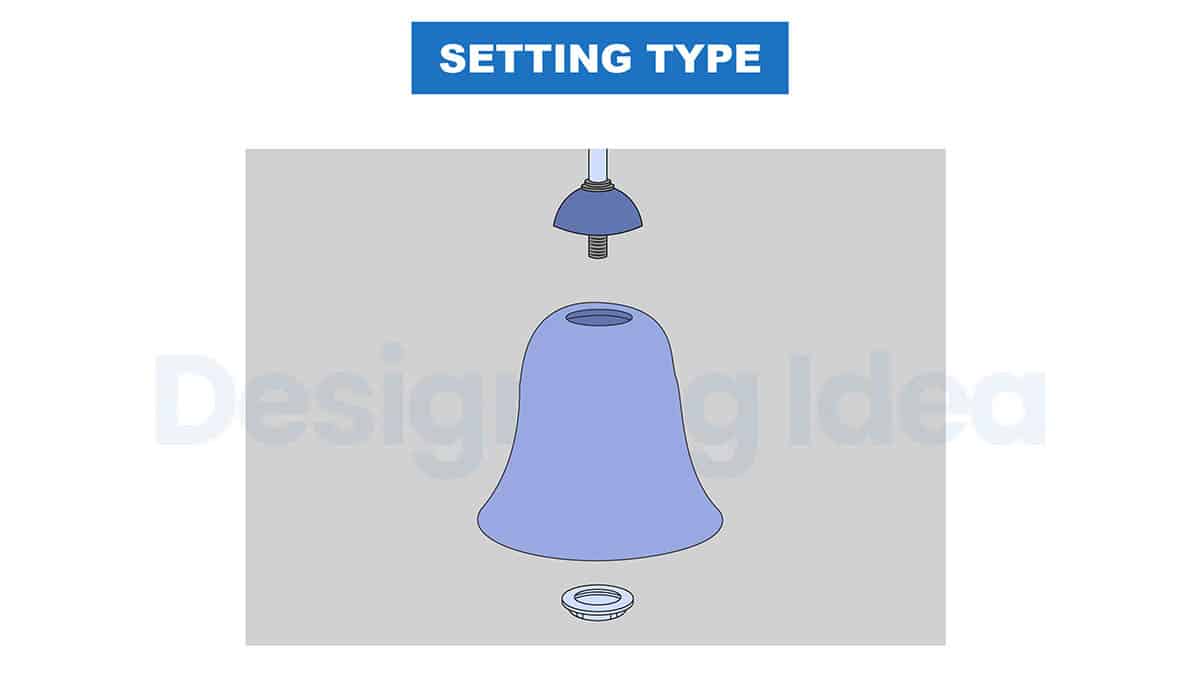
Softback: Fabric is used to support the inside of softback types of lamp shades. They are more expensive than hardcovers, but they are often of superior quality.
Softbacks are pleated most of the time, although not all the time, and they go beautifully with traditional décor.

Hardback: Lamp shades with a paper or plastic inner lining are regarded as hardbacks.
Although these shades are less costly than softbacks, the plastic lining turns yellow over time, lowering the intensity of light that’s released.
Lamp shades with hardback covers are often connected with sleek, contemporary décor.
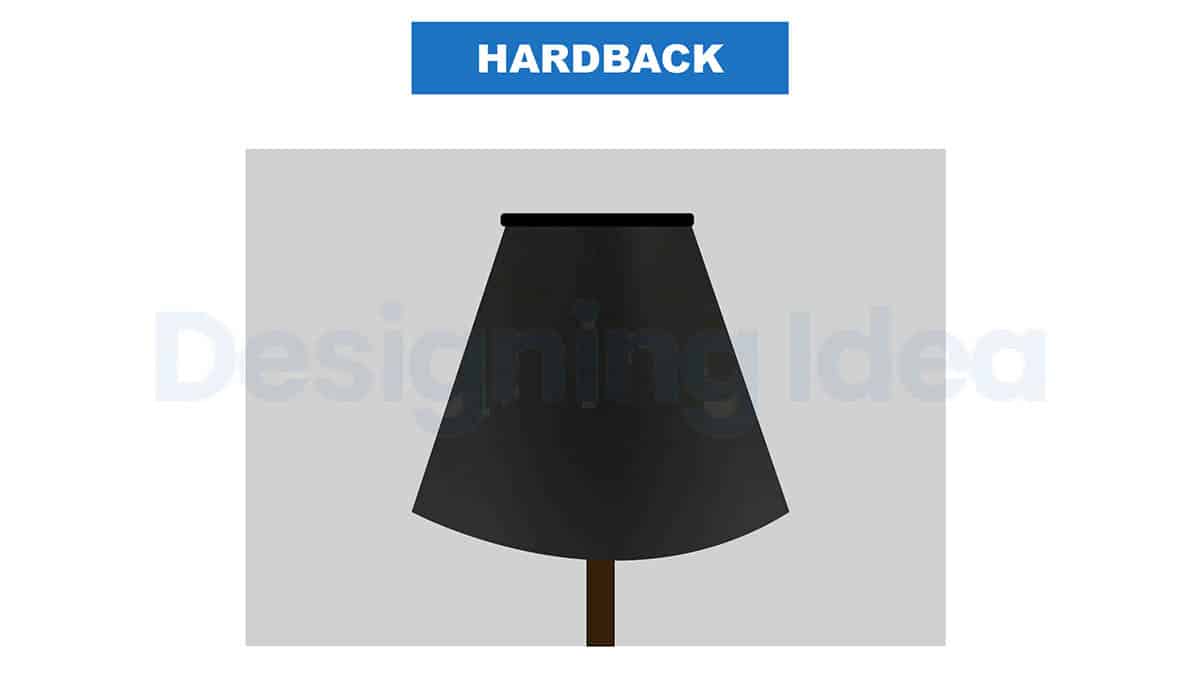
Backing Style: The inner backing of all fabric and paper lamp shades allows them to keep their shape. The interior surface of hardback lamp shades is made of plastic or thick paper, whereas the inner layer of softback shades is made of fabric.
Shade Materials
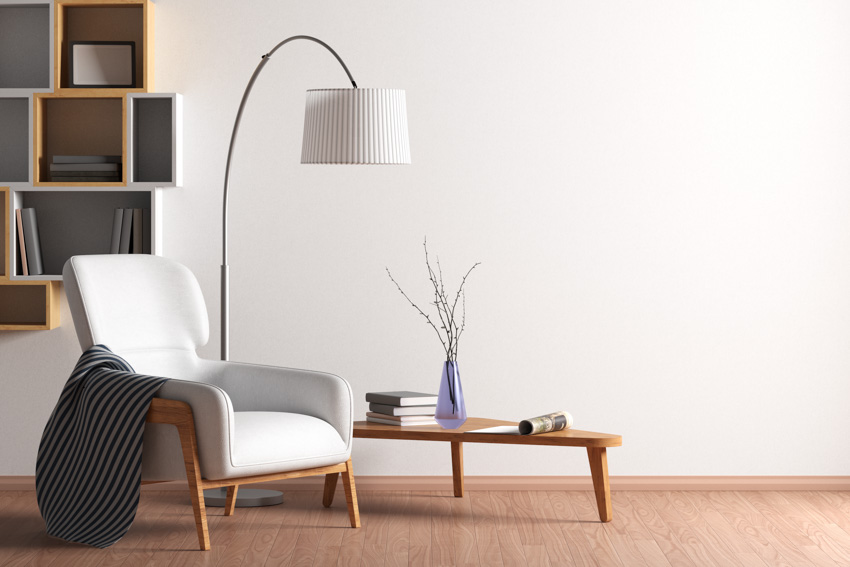
Fabric
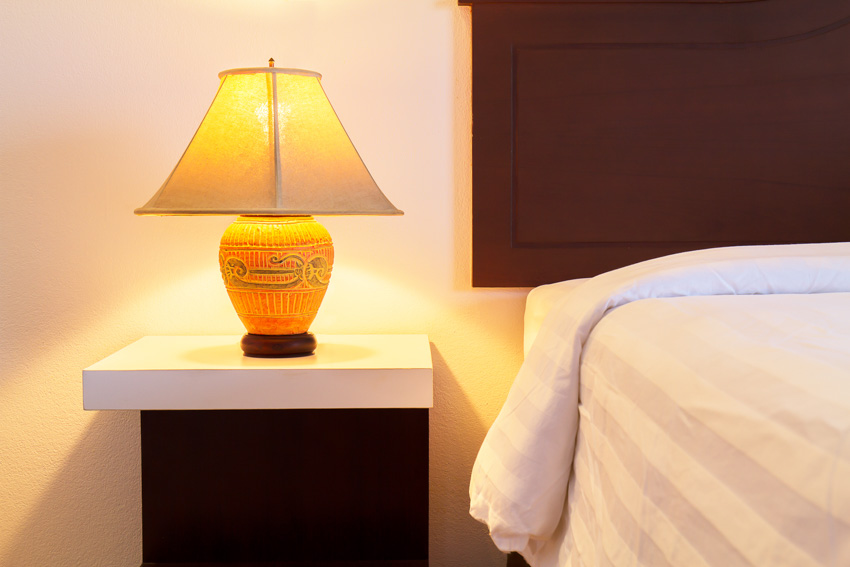
Fabrics including cotton, polyester, and rayon, as well as silk, linen, and burlap, are widely used in lamp shades. Fabric lamp shades, in actuality, come in a vast range of shapes, designs, colors, textures, and patterns. Strength and stability are provided by wire frames hidden between the lamp shade and the lining.
Linen

Linen is indeed a favorite choice for lamp shades since it is a low-cost and durable fabric that comes in a multitude of colors. Because linen is a translucent textile, it emits a mellow, warm natural lighting.
Burlap
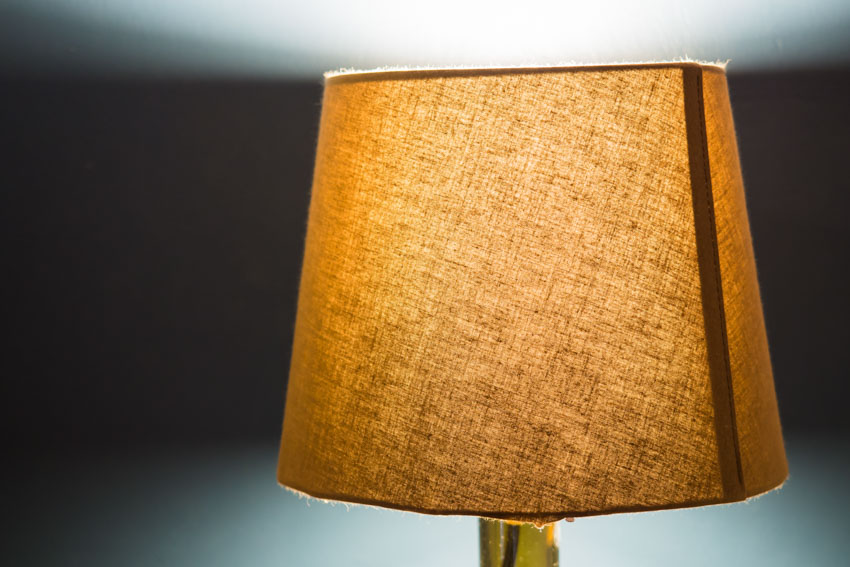
Burlap coverings are great for decorative or ambient illumination since burlap is somewhat opaque, allowing all of the lamp’s light to be emitted via the upper and lower apertures. This is also among the ideas that work well for a rustic living room.
Glass
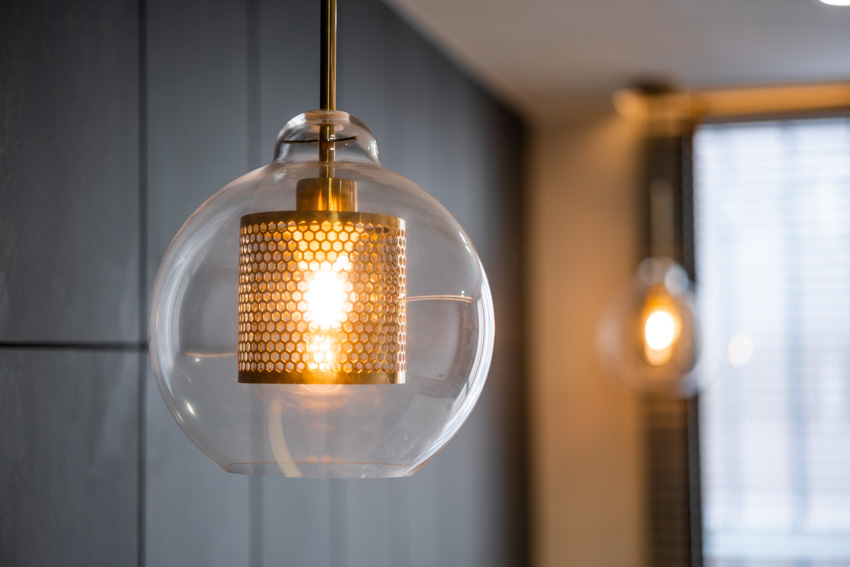
Although most glass shades are spherical, rectangular and square shades are also available, particularly in the art deco design.
Glass lamp shades are easy to clean and maintain and they generally have a stunning look. However, they are also brittle.
Crystal
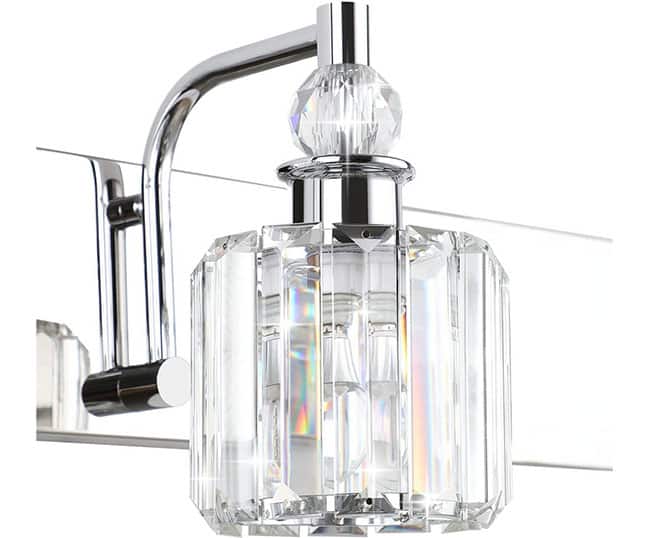
See this crystal lamp at Amazon [sponsored link]
Numerous separate prismatic crystals are strung together to make crystal lamp shades.
Their frameworks are typically circular, with silver steel bands that match the gleam of the crystals. Lamp shades made of crystal offer a sense of splendor to any environment.
Paper
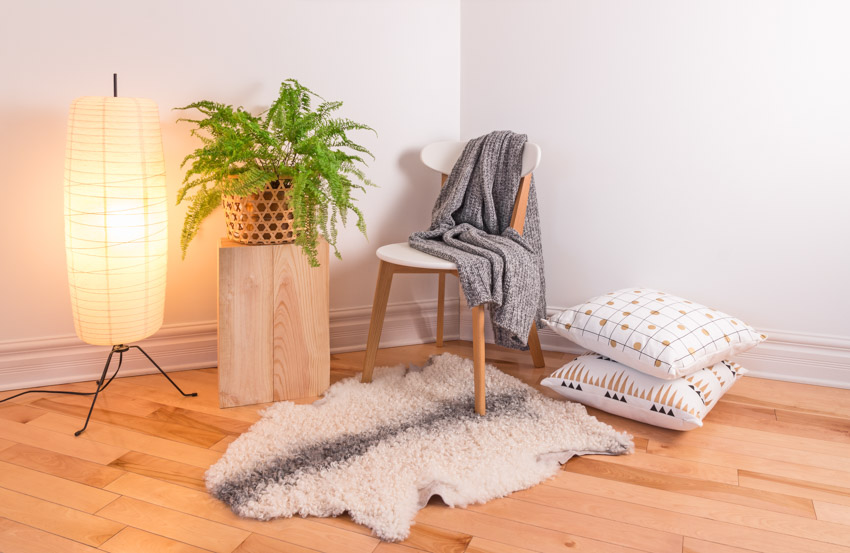
Paper lamp shades are more inclined to have distinctive patterns or designs printed on them due to their low cost of production, making them ideal for customizing your décor. Paper lamp shades, on the other hand, are extremely flimsy.
Parchment
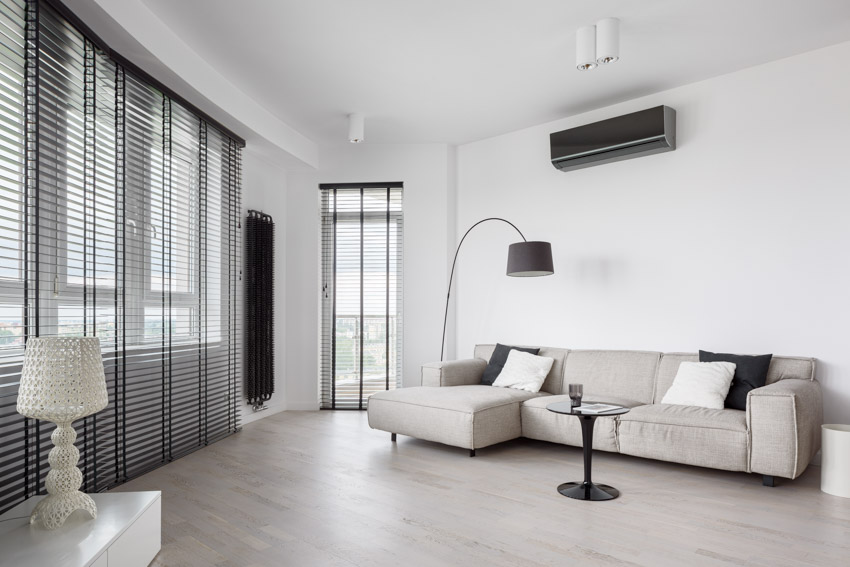
Parchment is a much more durable material than regular paper shades and offers some of the same affordability. Often made with cellulose fiber, flax or cotton, this heavy paper is more fragile than linen, and will also need special handling for cleaning.
There are laminated parchment shades available that have a harder outer shell. Some of these are available in kits for artists or people who want to create their own custom designs.
Typically, these can be wiped with a microfiber cloth. For shades with pleats you can use a soft unused paint brush to gently remove dust.
Metal
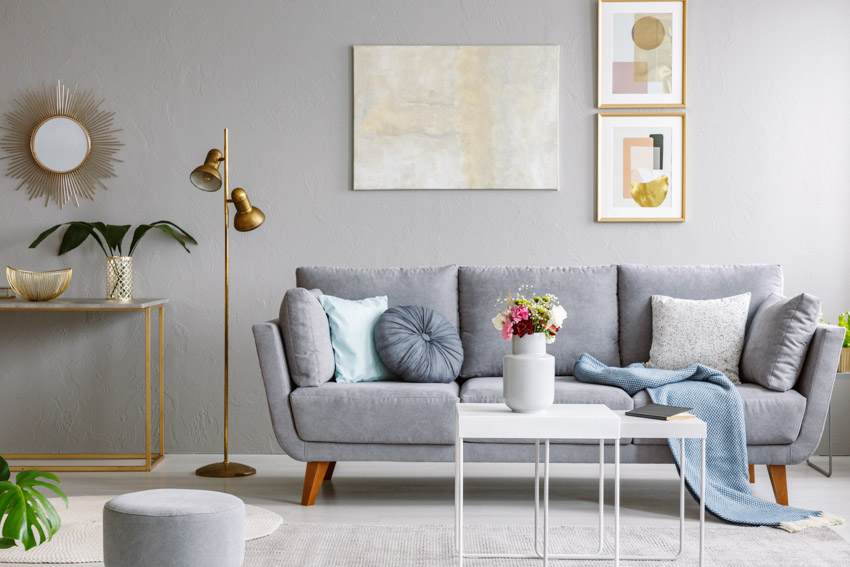
Because of the metal’s opacity, all light is diverted downward instead of escaping through the shade. Metal shades are ideal for work spaces or pendant lighting ideas over tables because of this.
Wood
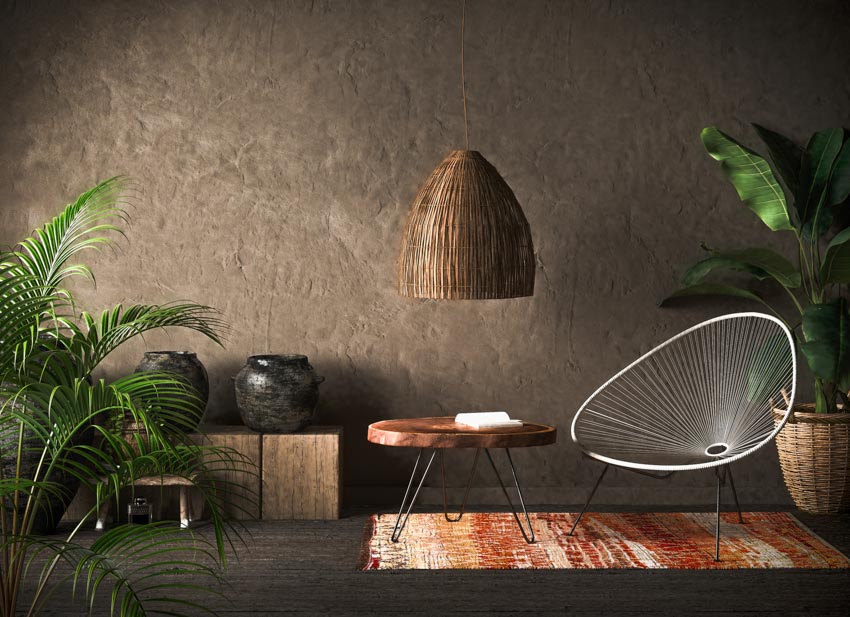
Wood material has the advantages of high specific strength and good workability compared with other building materials. In particular, a wood surface is characterized by warmth to the touch and by some degree of smoothness. – Recent Research on Wood and Wood-Based Materials, 2013
Since the wood is opaque, all light enters via the top and bottom apertures, providing intense, scattered ambient light or delicate accent lighting, but it will still depend on the design of the lamp shade.
Silk
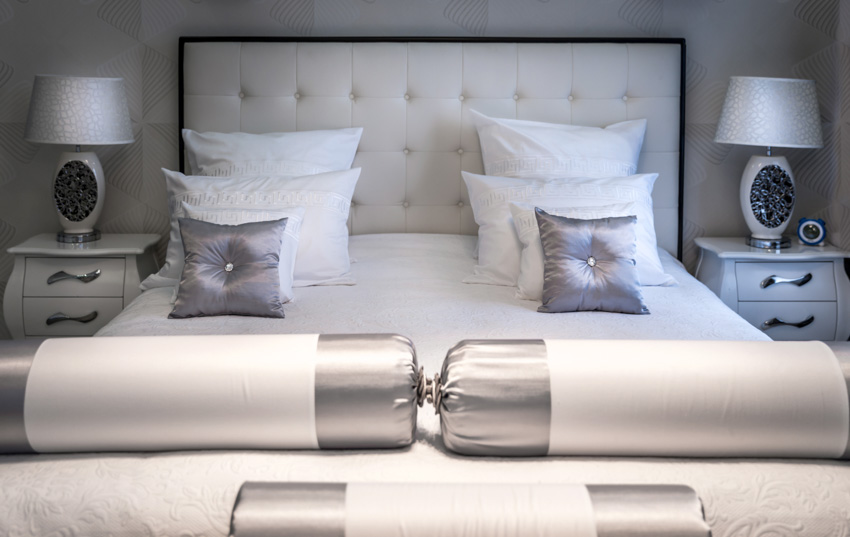
Traditional décor calls for pleated silk lamp shades, although silk shades could be used in almost any design. One thing to keep in mind though is that silk is tough to clean.
Mica

Micas are minerals with incredibly thin crystals that could be sliced into flakes. These flakes are mixed with shellac glue to make amber-colored mica strips, which may subsequently be shaped into a number of objects, notably lamp shades.
Mica is a prevalent decorative material in Arts & Crafts. It’s valued for its individuality. Each shade has a different appearance due to the varied combinations of mica and shellac in each strip of the material.
Rattan
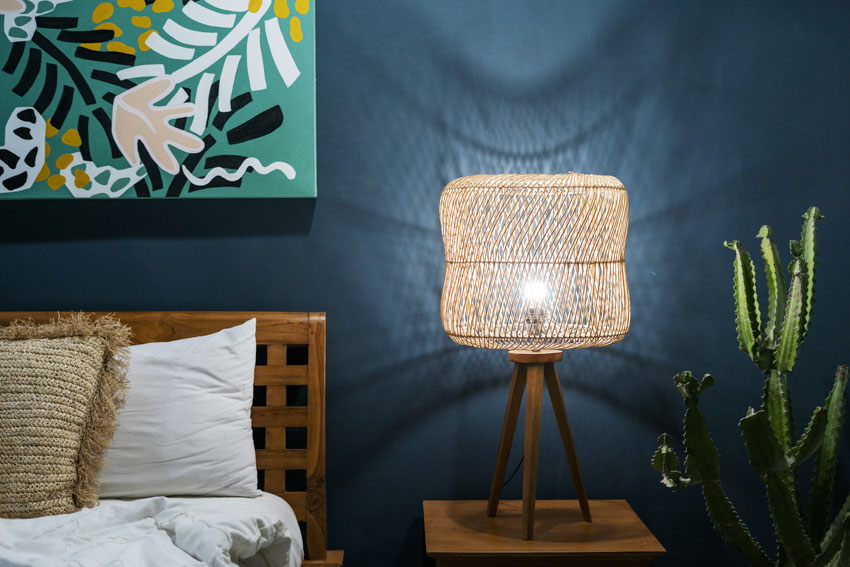
Rattan shades give a place a warm, earthy atmosphere. They are made out of vertically aligned rattan wicker weave strips with enough space between them to let light pass through, generating a pleasant, gentle glow.
Rattan material is very lightweight, attractive and durable making it a good choice for interior designs. It’s look is ideal for traditional houses.
Bamboo
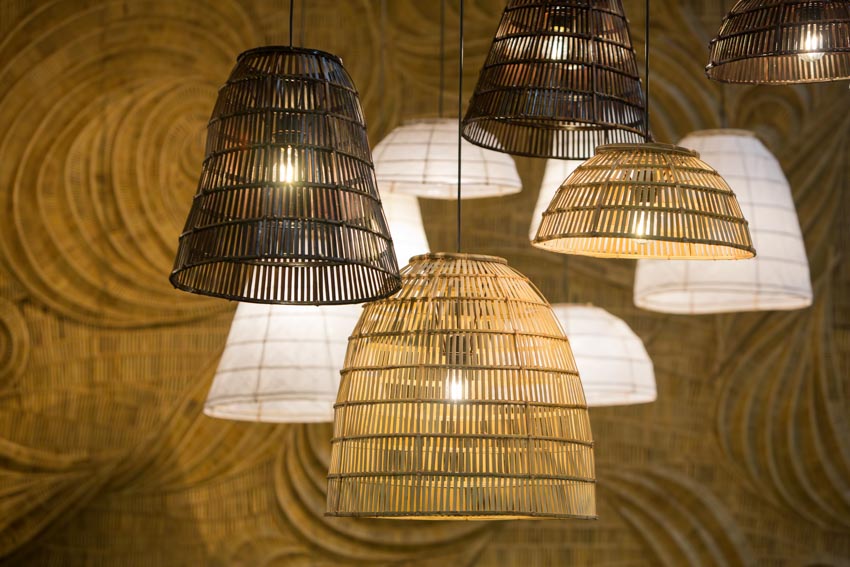
Bamboo shades, like rattan, give off a natural, tropical vibe. Because bamboo slats are broader than rattan slats, less ambient light passes through a bamboo-made lamp shade. For dramatic illumination, bamboo shades are usually paired with tabletop lamps.
How to Measure a Lampshade
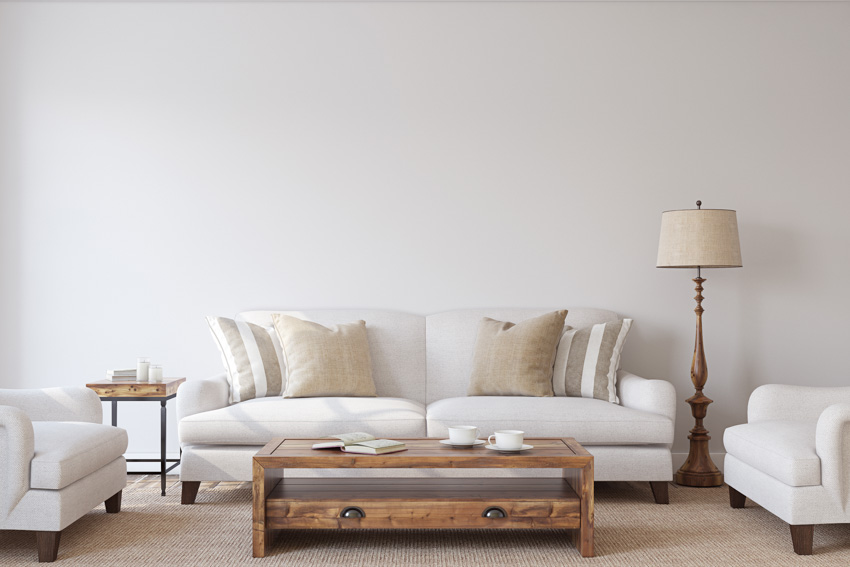
If you need some assistance when choosing a new lamp shade, you must know how to correctly measure your lamp shades as well.
We’ve put up three techniques to assist you with your concerns, especially when it comes to measuring a lamp shade.
Measuring Technique #1
• Remove the lamp’s shade. Once the lamp isn’t in the way, measuring the shade will be much simpler. Remove the lamp shade with care and place it on a table for the time being.
• You may simply take the clip-on shade fitting off the light bulb if the model has one. However, be gentle to prevent harming the bulb.
• Disassemble the finial that secures the shade onto the harp, and afterward, take the shade off if the lamp has a spider lamp fitted with a lamp harp.
• Loosen the bulb and slowly take the shade off if your unit has an Uno lamp shade fitting attachment.
Measuring Technique #2
• Position the tape measure in the middle of the upper diameter. Keep your tape measure at one end of the upper edge of the shade, then drag it up to the outer end on the right in the center.
If your shade is square, measure one side of the square from the corner to its opposite corner to get the right size.
• Make a note of the measurement. Take note of the initial measurement on a piece of paper. Take note of the top diameter as well so you determine how wide a different shade you’ll need.
• Measure the bottom diameter with the tape measure. Position the tape measure at one corner of the shade’s lower edge after you’ve identified the top diameter measurement. To obtain the correct measurement, pull it over to the opposing side.
• To be sure you have the exact size of the shade, write down the second measurement with the upper diameter. Take note of the bottom diameter measurement.
• Remove the shade from the table and replace it. To measure the slope, start at the top edge of the shade and bring the measuring tape down to the bottom edge.
The height of a shadow is also referred to as its slope. A square shade, for example, will not have any slope. However, to determine the shade’s height, measure from top to bottom in the same method.
• You may pick the right size for a new shade after you’ve documented all three measurements for the shade. The top diameter, bottom diameter, and slope or height are usually listed in that sequence on most shades.
Measuring Technique #3
• Choose a shade that is approximately two-thirds the height of the lamp’s body. It’s critical to select a shade with the proper proportions for the lamp core or bottom. Choosing one that is two-thirds the height of the lamp gives it a pleasing, balanced appearance.
• Select a shade with the same top diameter as the bottom of the lighting fixture. If the top of the shade is the same width as the bottom, your lamp will appear more balanced.
For a more coherent aesthetic, consider a shade that has the exact shape as the base. To acquire the right diameter, run the tape measure across the middle of the light fixture base from one side to another, similar to the way you performed with the shade when you get its diameter.
• Select a shade with a bottom diameter that is larger than the lamp’s widest portion. You wouldn’t want the shade to be too narrow, therefore its bottom should be bigger than the lamp’s base, which is normally its broadest component.
A Few Reminders
The height of a tabletop shade must be 60 to 70% of the height of the bottom part. The height of a floor light fixture must be equal to the height of the base multiplied by 30 to 40%. Across the slope, measure the shadow height.
A table shade’s diameter, or width, should never surpass the height of the base and should be within 2 inches of this size, whereas floor lamp shades must clear the bulb’s broadest section by at least 3.5 inches on each side, unless the fluorescent bulb used has a compact size.
The diameter of a shade is commonly used to indicate its size. For instance, a 16-inch shade has a diameter of 16 inches as well.
What Type of Shade Do I Need?
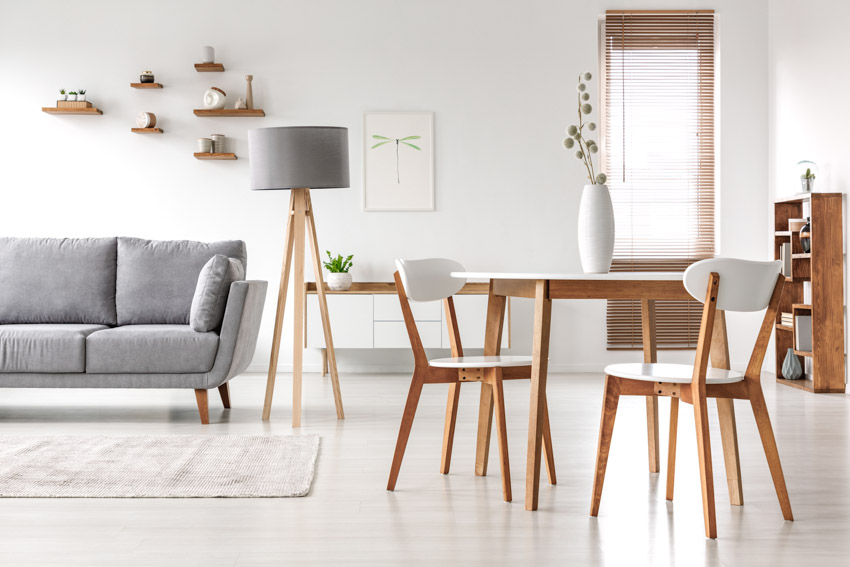
What type of lamp shade do you need? Technically, the answer to this question will just depend on your needs and preferences. It’s all about scale, design, and supporting your base when choosing the right shade for your table or floor lamps.
Hence, it must be appropriate for the setting and occasion, complement without being overpowering, and draw just enough attention to be recognized. While understanding how to measure a lighting fixture for a shade might be difficult, it will ensure a great result.
Choosing the right shade type isn’t an easy task.
Therefore, you can guarantee that you will get the proper shades for your remodeling task by considering dimensions and fitting attachments, the amount and quality of light that you want, and the material, color, and design that best fits your interior space.
How To Choose Lampshades
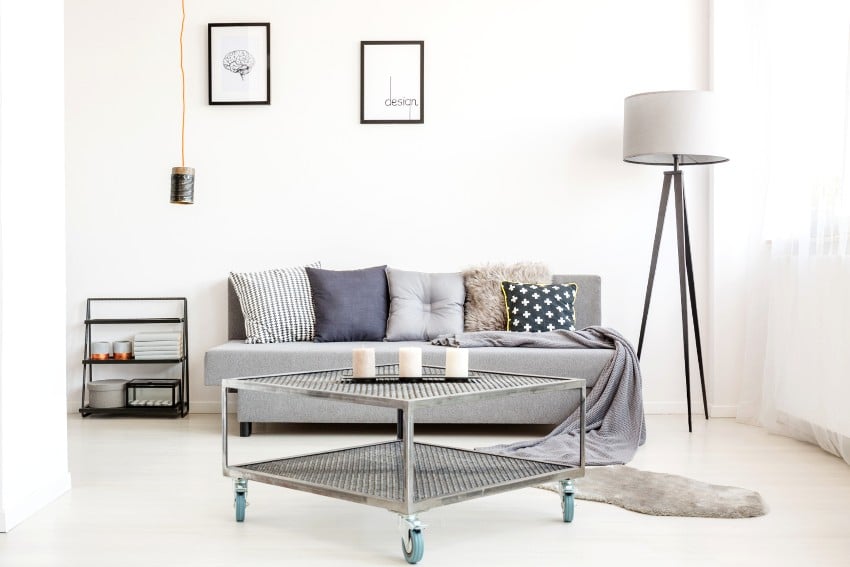
For this question we asked interior designer Maria Bott to share her advice on how she helps her clients choose light fixtures for their interior design projects:
Lighting creates depth and height for the design elements and draws attention to the space you want to highlight. Incorporating the perfect lampshades in the interior design affects the mood of the occupants and transforms the ambiance of the room.
There are many components to consider when choosing lampshades such as their shape, size, style, and materials. The rule that is wise to follow is that the shade’s shape should go by its base’s form.
Always consider that a curved base such as a round or oval contour will work well with a curved shade outline while a geometric square and angular base will suit well with a straight or tapered edge shade.
Different shapes and styles of light fixtures bring a distinctive design impact to the interior concept. For example, an empire lampshade that can be paired with a variety of lamp bases offers a classic and timeless shade that goes well in traditional and modern interior settings.
In the case of the drum shade, this shape fits beautifully in a modern space due to its clean and contemporary geometric form.
Meanwhile, the fluted shade conveys an elegant and refined style whereas the pleated style shades offer a casual and cozy feel.
In a more traditional interior such as a Victorian or Colonial period style, the scalloped edge shade with its romantic curve is a perfect fixture to use especially in the bedrooms.
While for a contemporary or minimalist interior, rolled lampshade is a perfect choice because of its smooth and modern look.
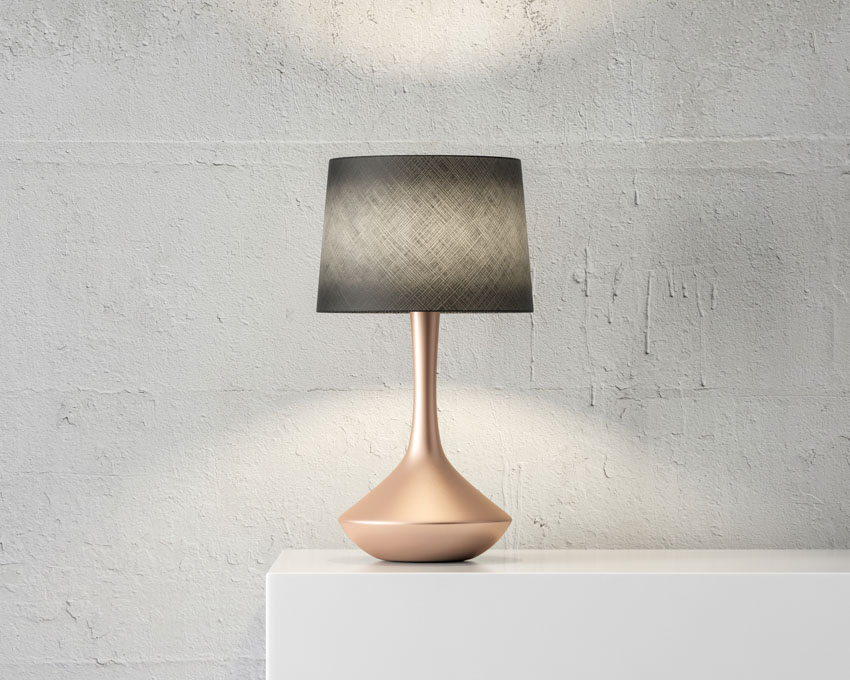
In addition, materials used for lampshades are the detail that introduces color and texture, as well as contributing special characteristics to the design scheme.
Fabrics are the most commonly used materials for lampshades due to their versatility, and durability. Using light to medium-weight fabrics for lampshades is best for producing pleasant and ambient lighting.
Heavier fabrics such as velvet are opaque materials that don’t let as much light through around, but instead send the light up and downwards thus, creating warmth and depth within the surrounding space.
Cotton fabric is best used for rolled or pleated shade as it offers a cool and smooth look or a classy and shirred effect.
Lampshades made with silk fabric bring to a room an eye-catching sense of luxury and elegance while linen shades offer a lovely rustic simplicity with their natural and stiffer weave that adds character and texture to the elements of the design.
Fabric with horizontal or vertical grid designs are suitable for drum shape lampshades while those with florals and abstract designs go best with empire style shades.
Moreover, parchment and paper lampshades made from natural fibers offer a cool and contemporary look that adds extra character and interest to the design scheme with its exquisite luminosity.
For a more natural and tropical vibe, wood, rattan, and bamboo shades feature a warm and earthly atmosphere. These organic materials provide an intense, scattered ambient light that is best used for delicate accent lighting.
Other attractive and elegant lampshades are those that are made of glass which offers a timeless chick and classic look perfect for creating a vintage-inspired style in your home. They usually feature a tulip shape with rippled edges and some are finished with patterns and decorations.
Modern-day lighting also uses glass shades that come in white frosted glass and are also available in different colors. They have a variety of textures and a wide range of decorative options that fit perfectly in a modern interior setting.
Contemporary workspaces usually incorporate pendant lighting that uses metal lampshades due to the opacity of the material which diverts all light downward. They are most excellent used in industrial-inspired kitchen and dining room areas.
Nowadays, when people are into holistic health, exercise, good nutrition, relaxation, and sleep are crucial to healthy living. Crystal lamps are a wonderful element that can assist with clearing negative energy and promoting better sleep.
One of the best examples of this is the Himalayan salt lamps which claim to boost your mood, improve sleep, and can clean the air. Mica mineral lamps and shades are made of natural mica minerals combined with natural leaves and delicately cut designs and are known to possess healing properties that calm the mind and promote serenity.
Suitable to use in the bedroom, its soft beauty gives off a fire-like glow and produces a marbled look when illuminated while said to resolve dehydration and induce sleep.
Selecting the right lampshade requires you to also know how to correctly measure them regardless of what shade you choose. Always keep in mind that the shade should completely cover the “throat” or workings of the lamp.
This means that the width of the shade should be twice the size of the lamp’s base and the height should be a third of the overall height of the lampshade.
For example, if the table light base has an eight-inch width with a thirty-inch height; its shade should measure sixteen inches in width and should be ten inches tall.
Remember, choosing a lampshade for the perfect finishing touch is all about scale, sizing, style, and luminance it gives off depending on the shade material you use. Lampshades are a great way to make a dramatic design statement, so don’t be afraid to experiment.


